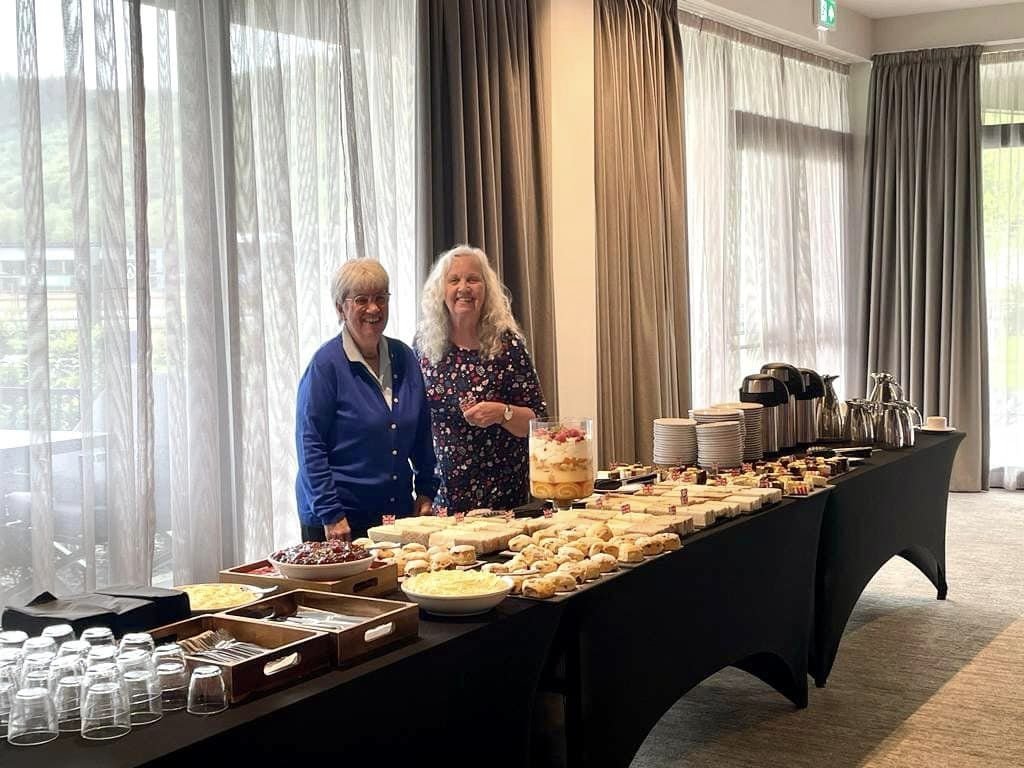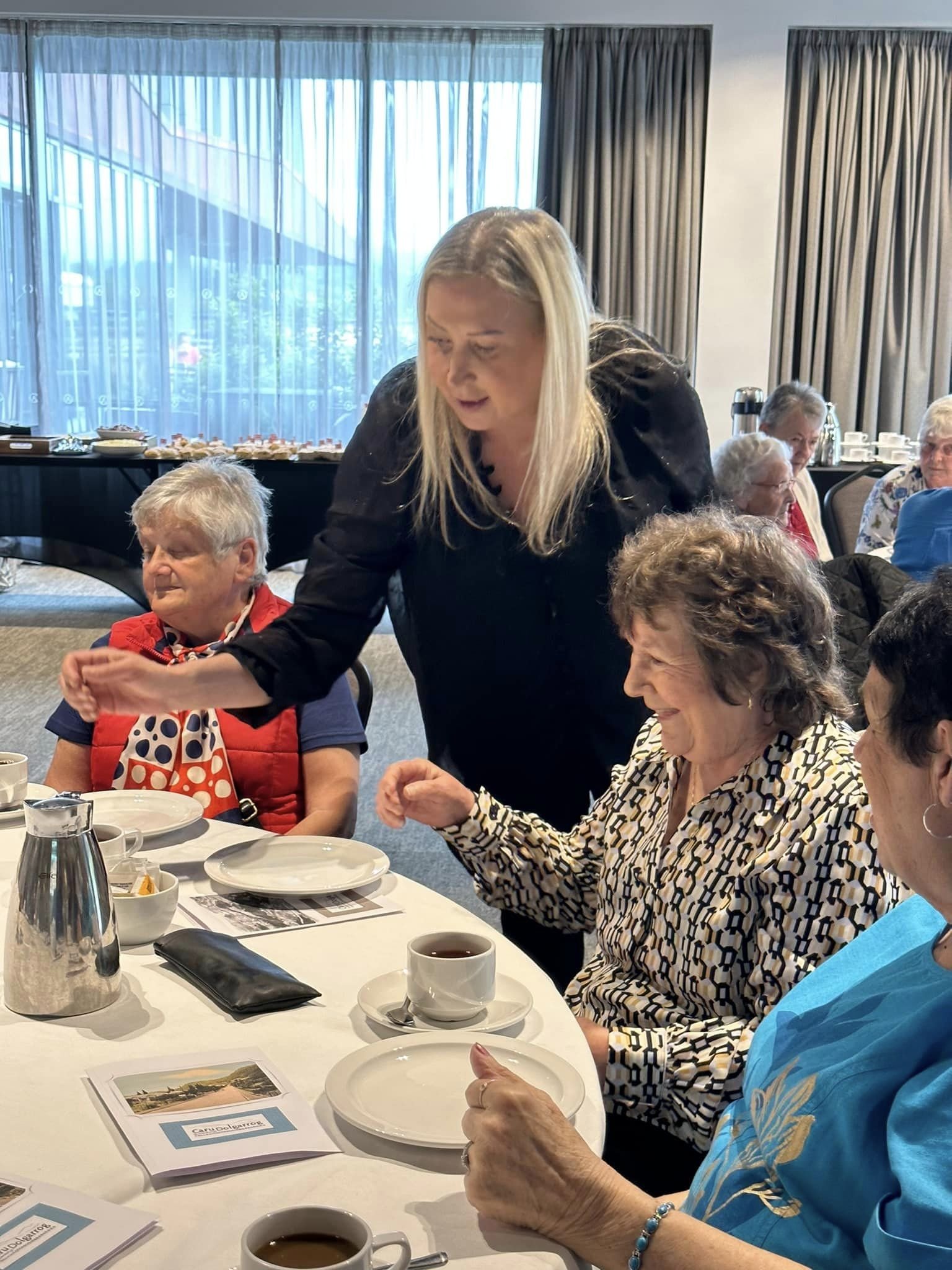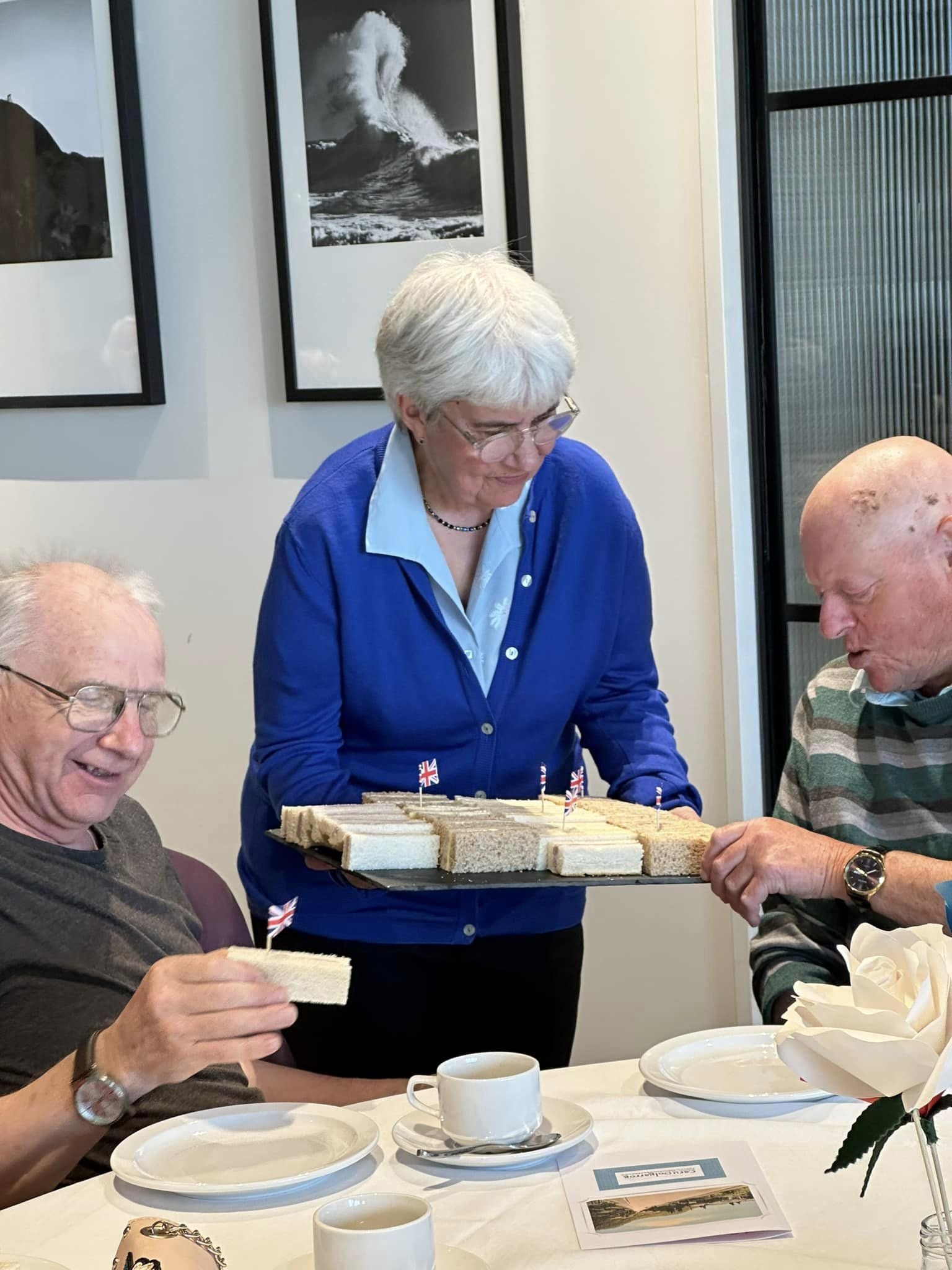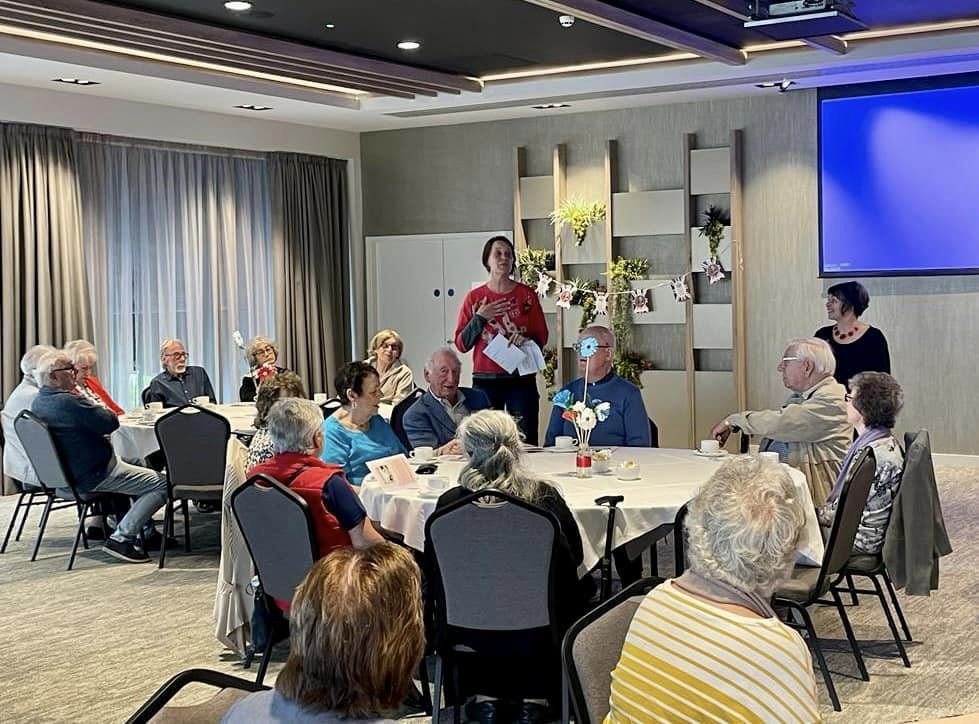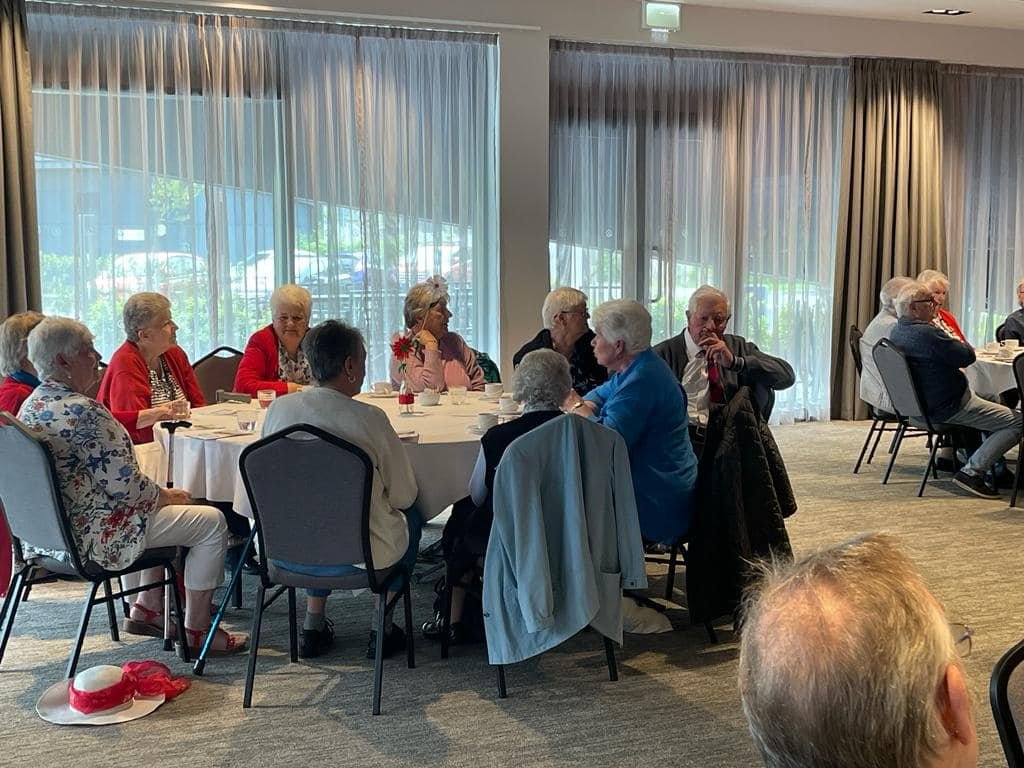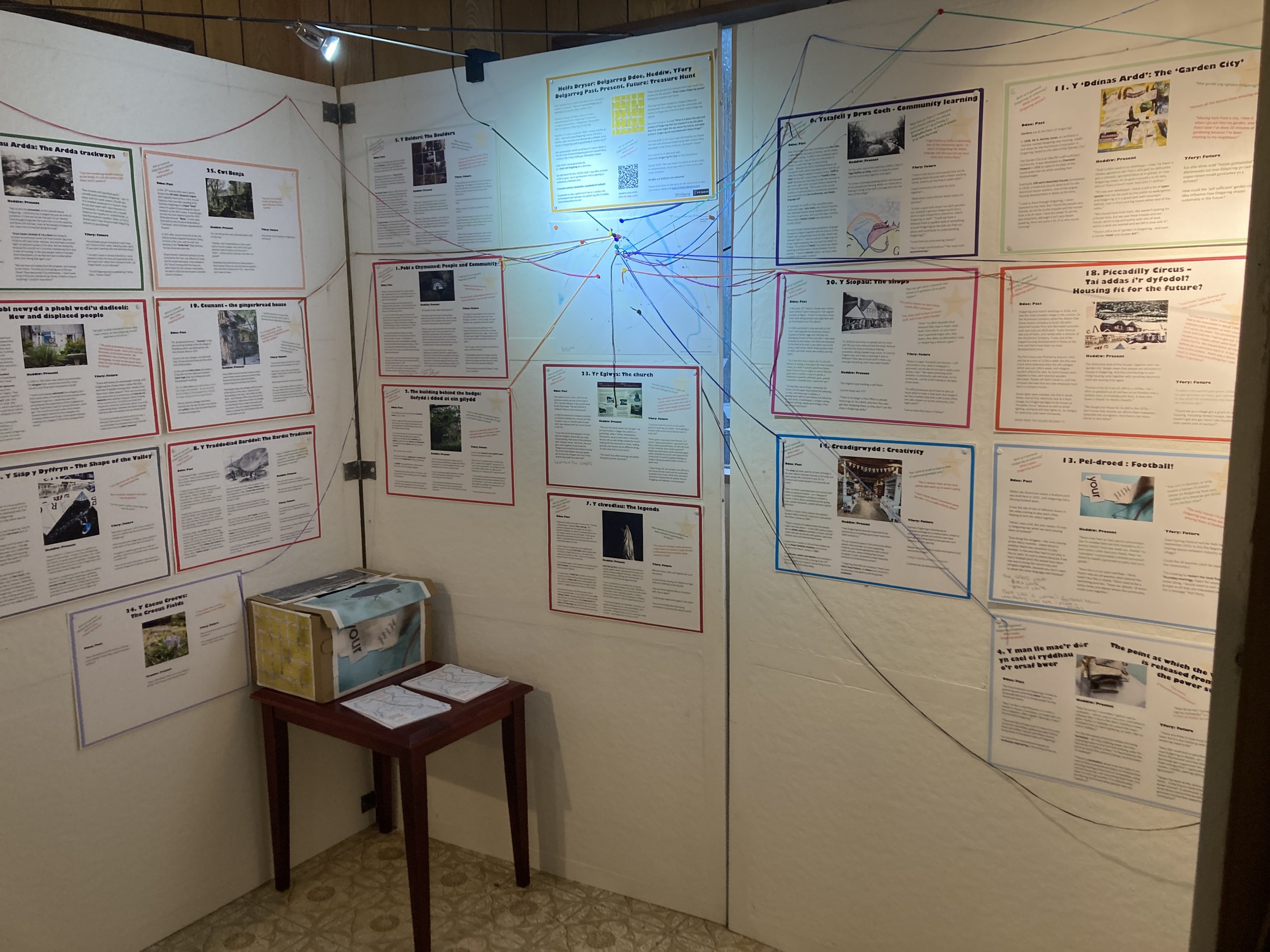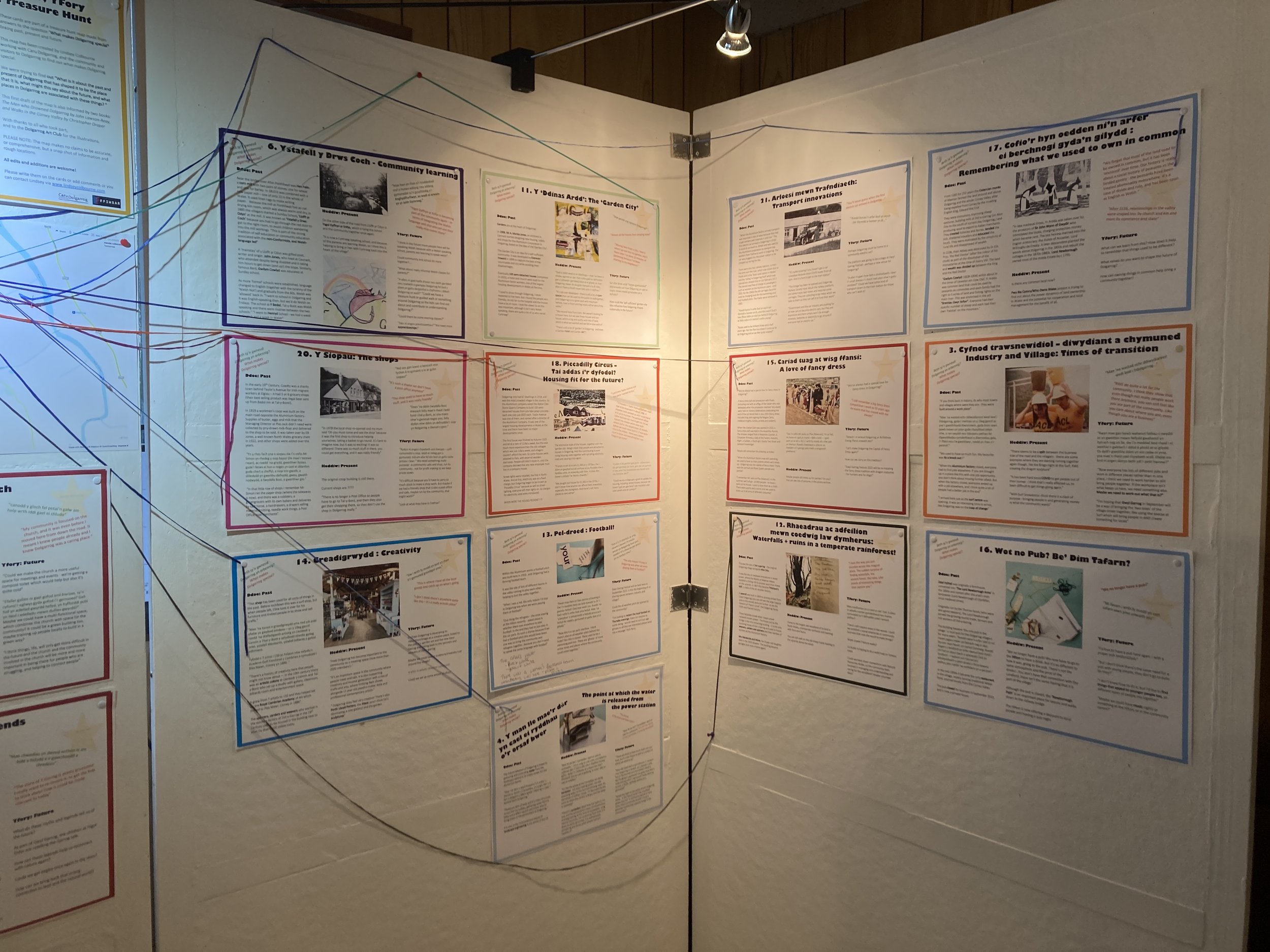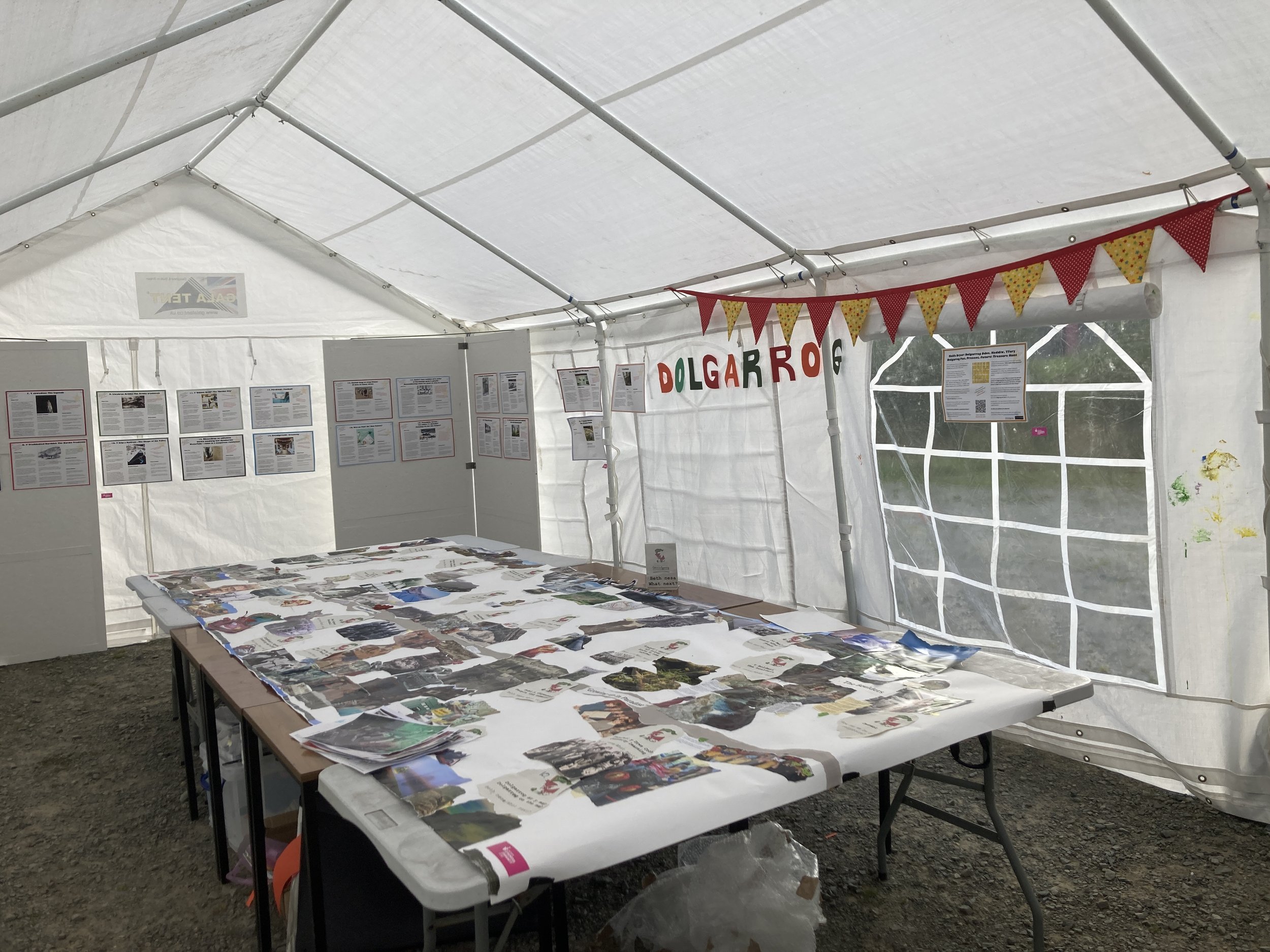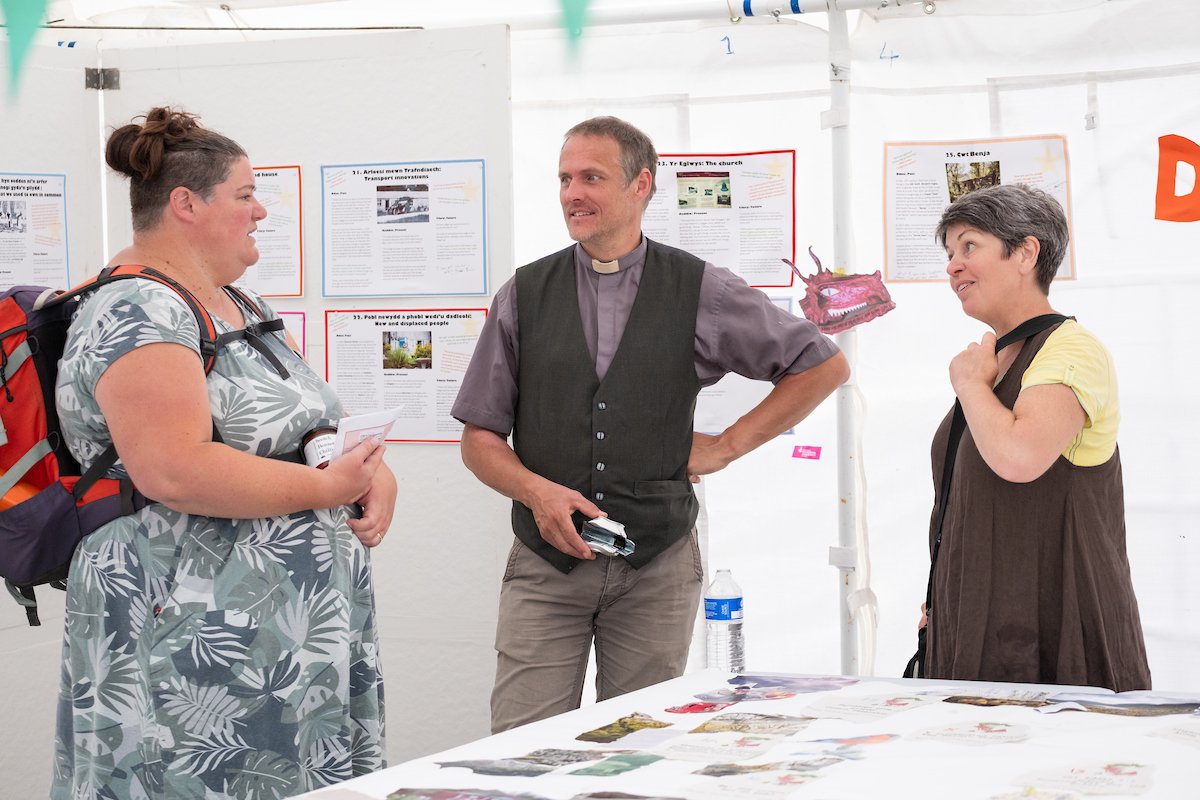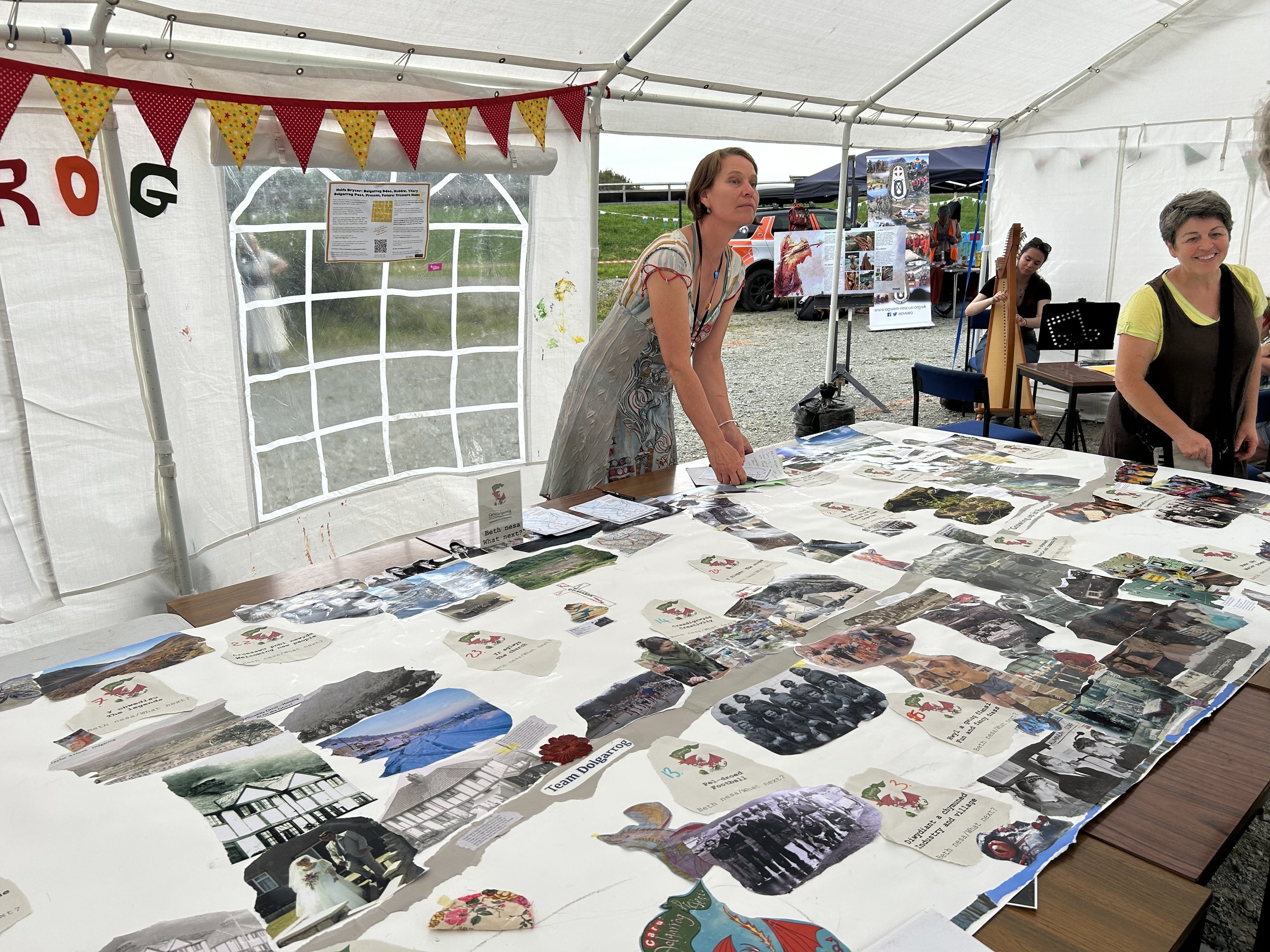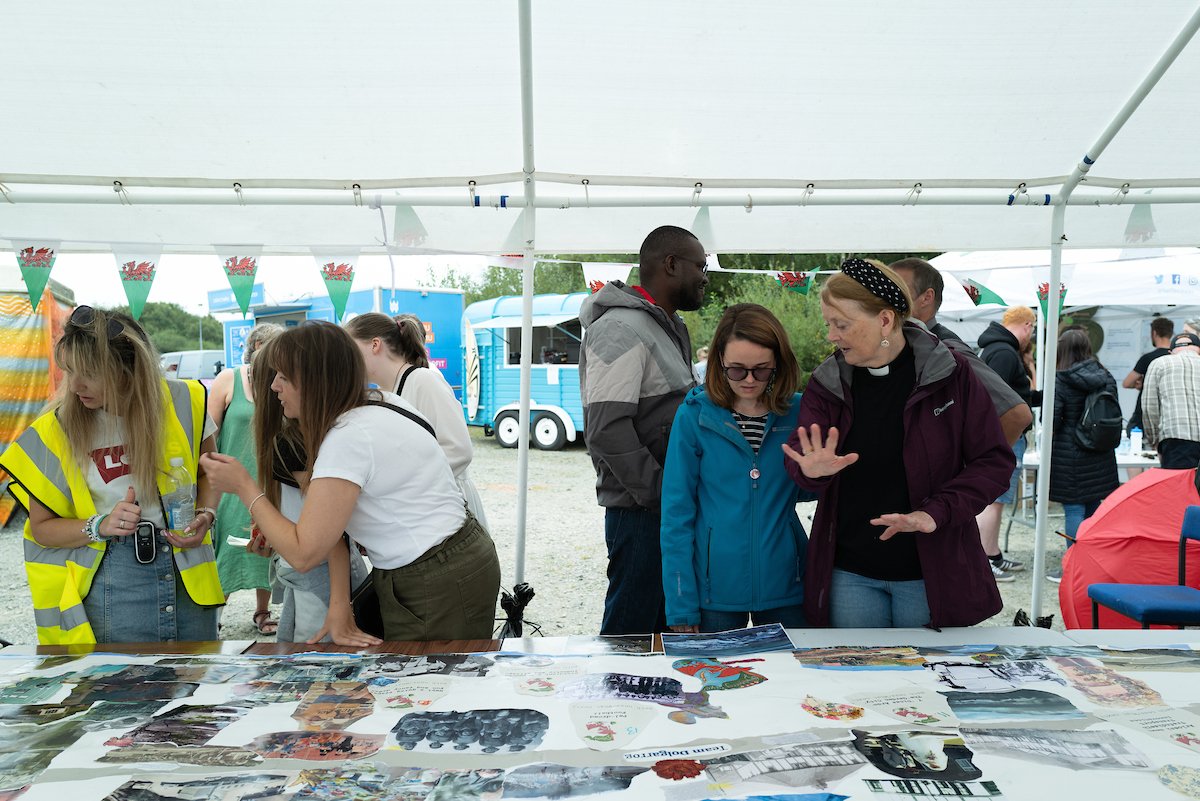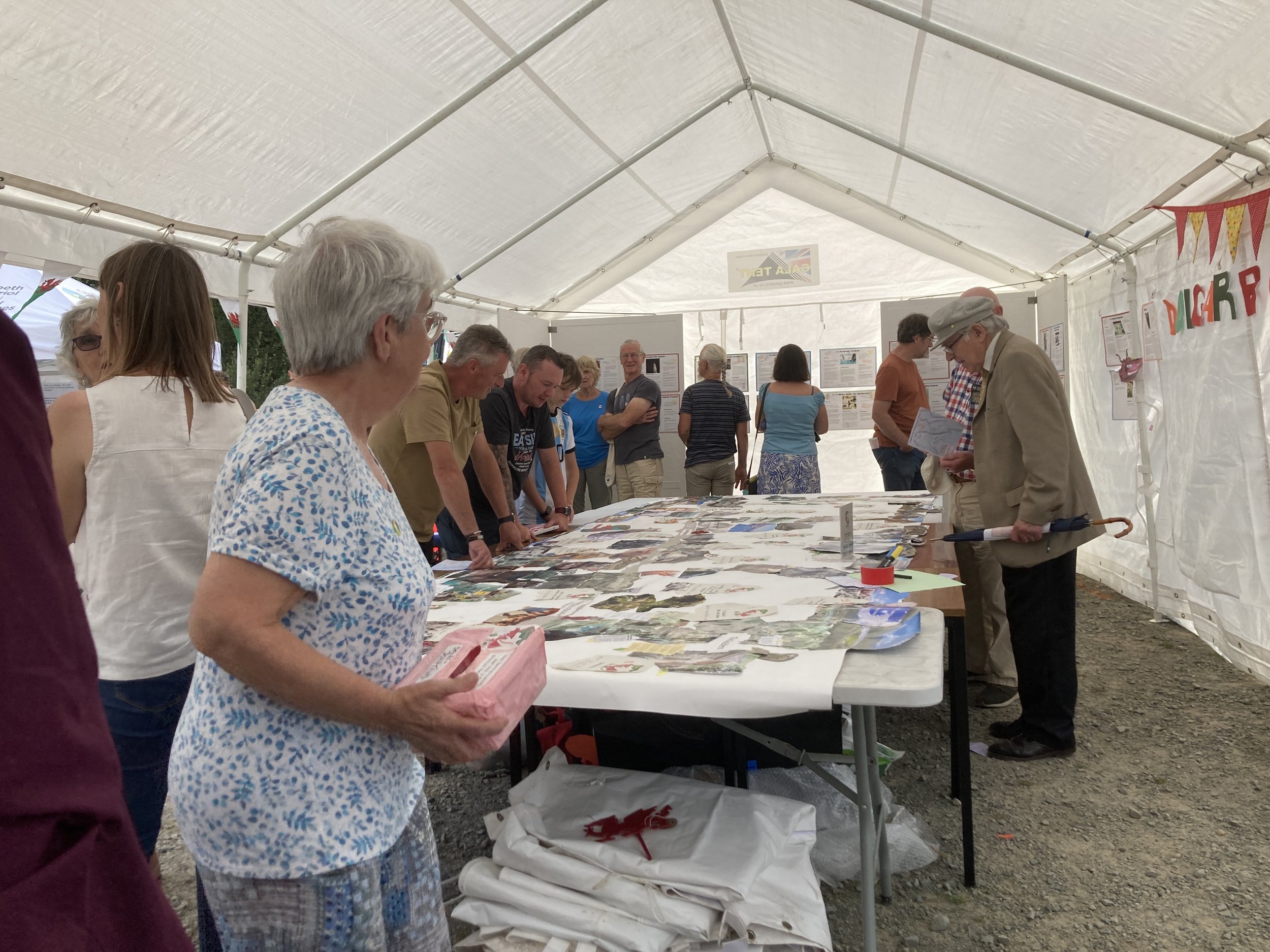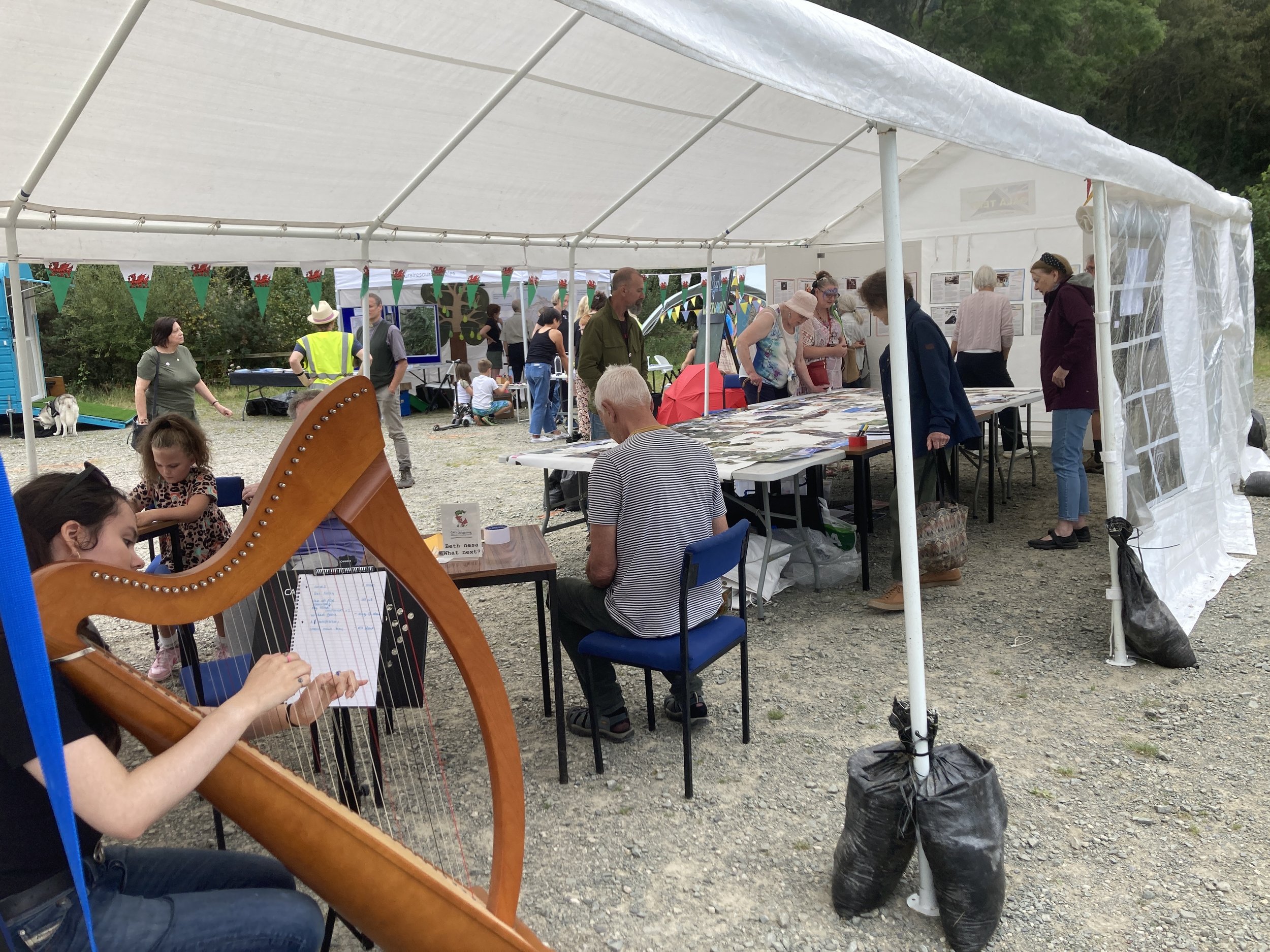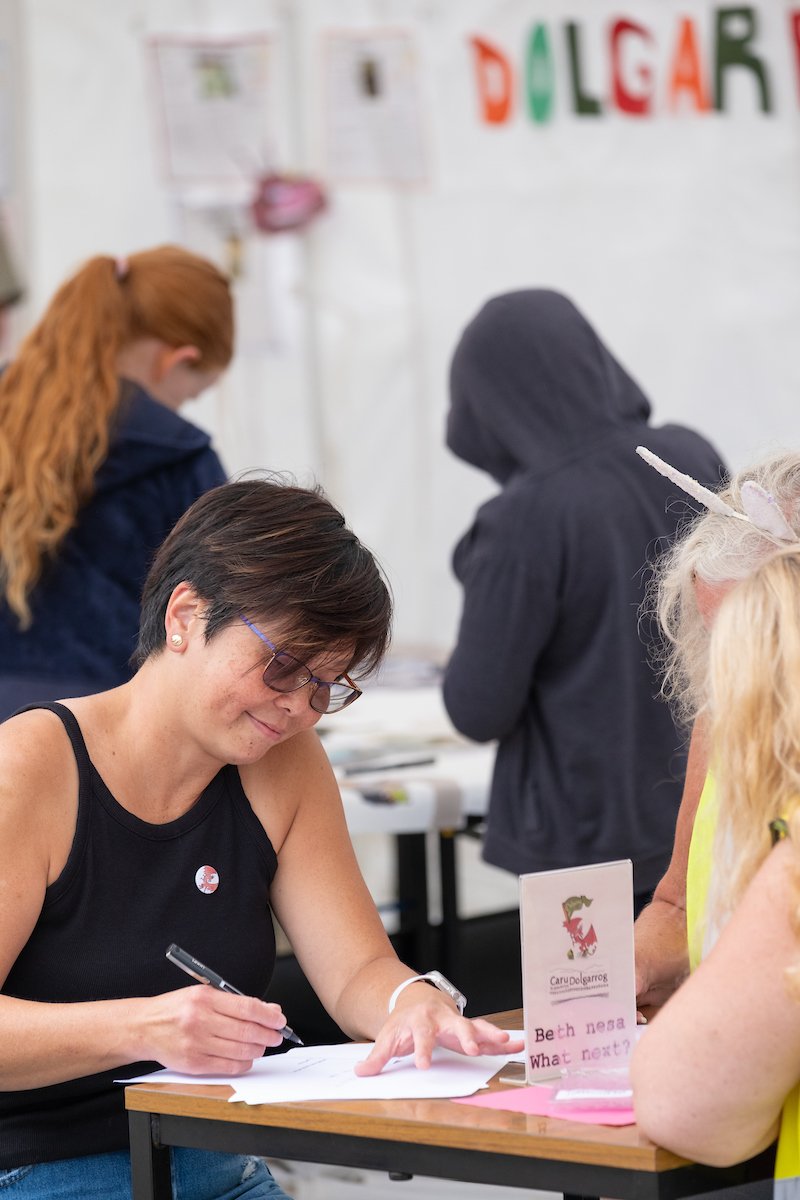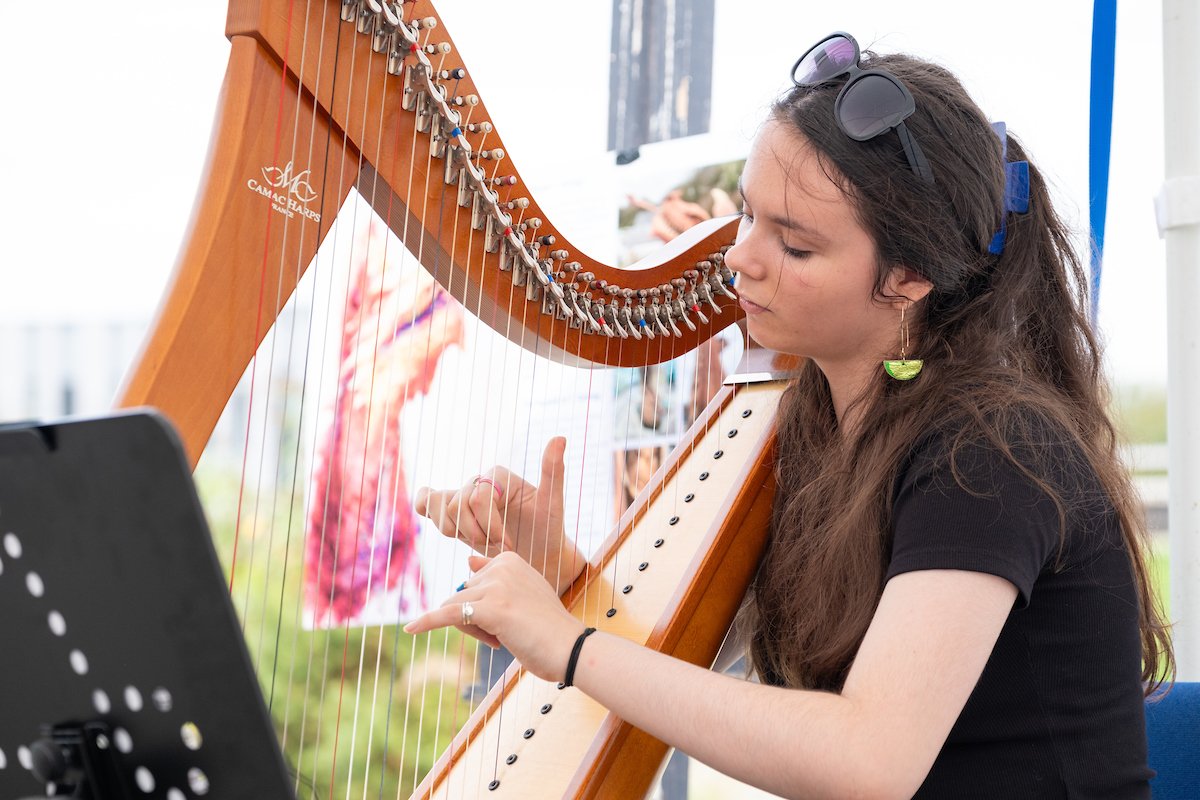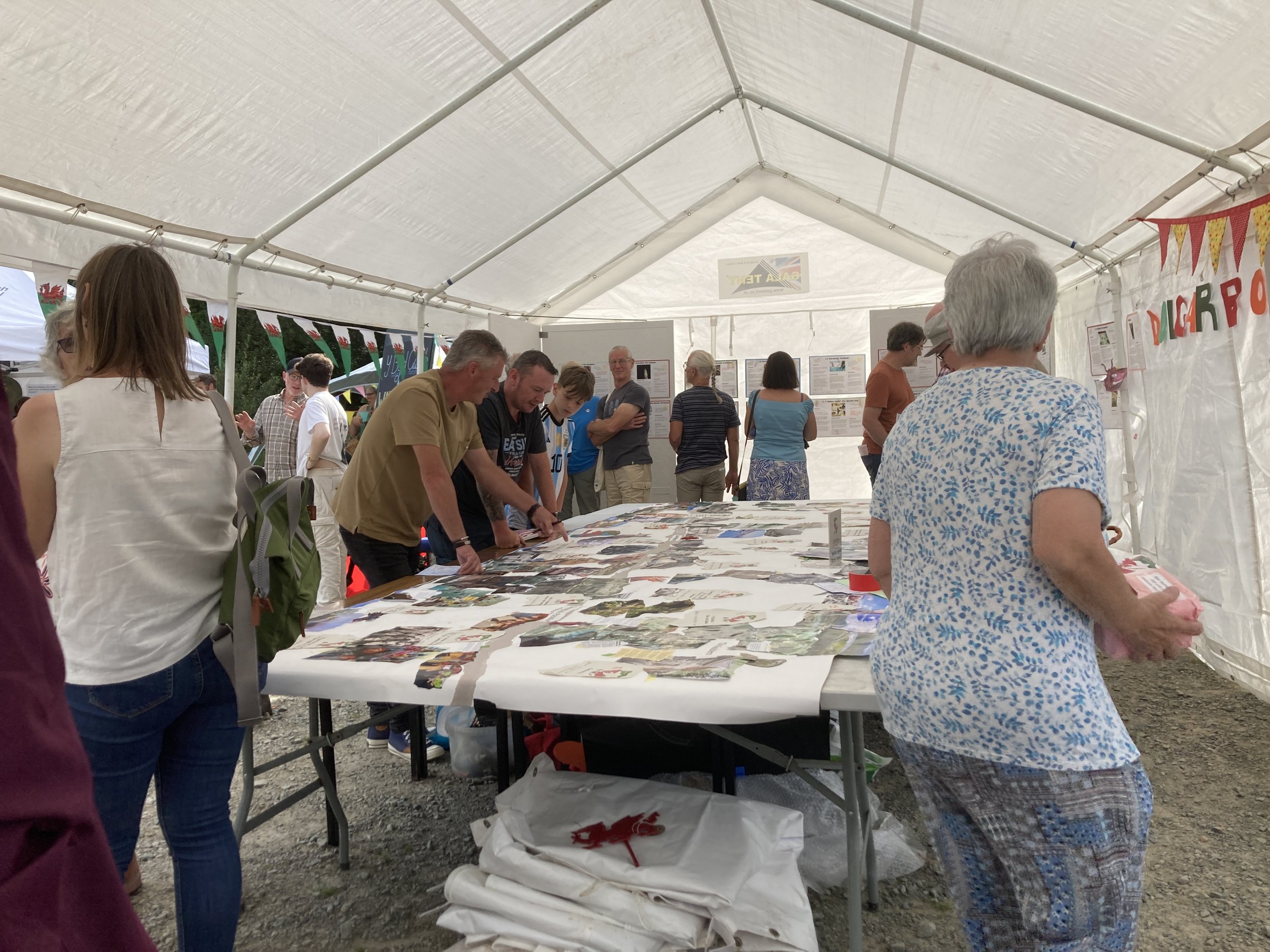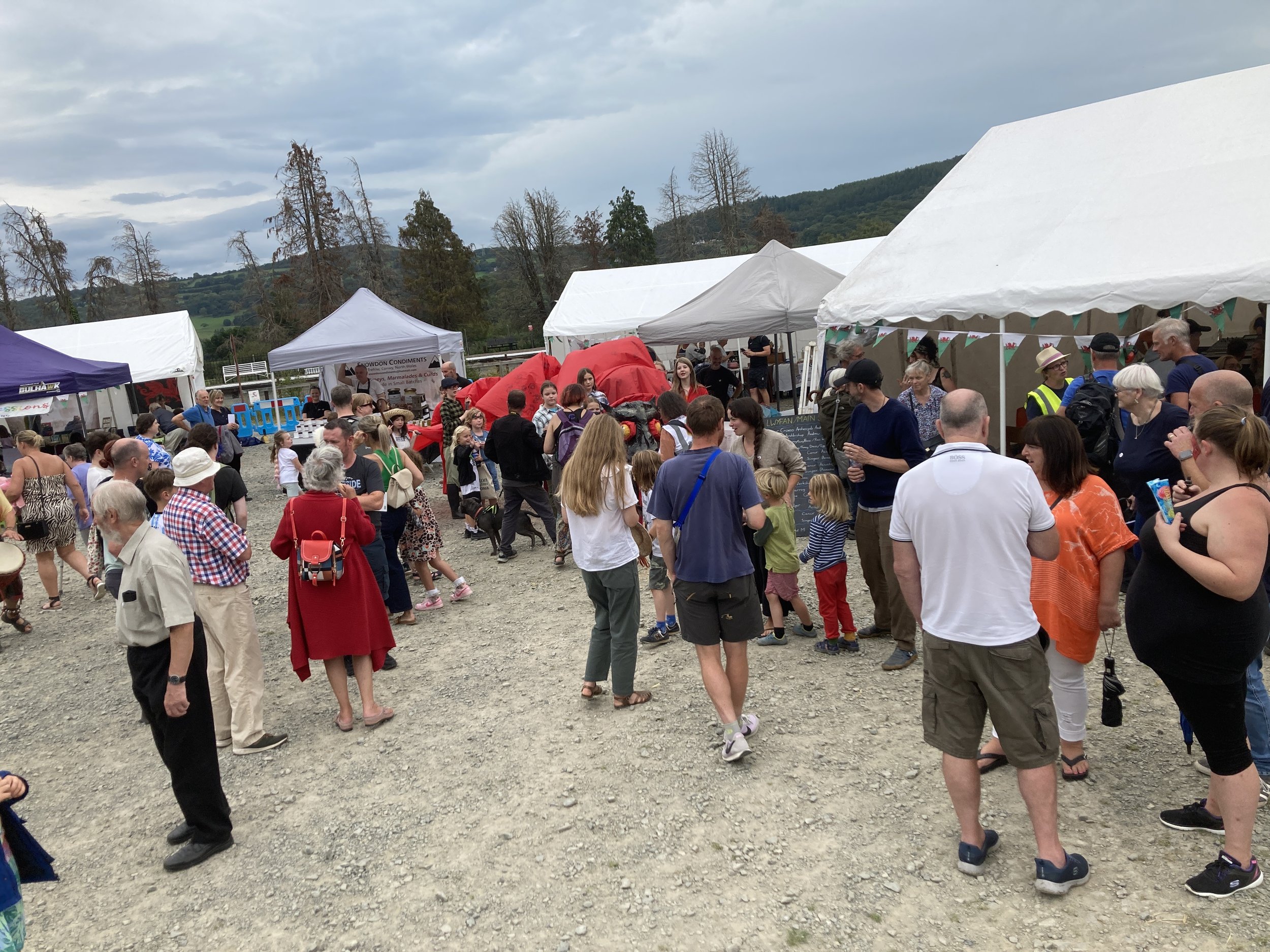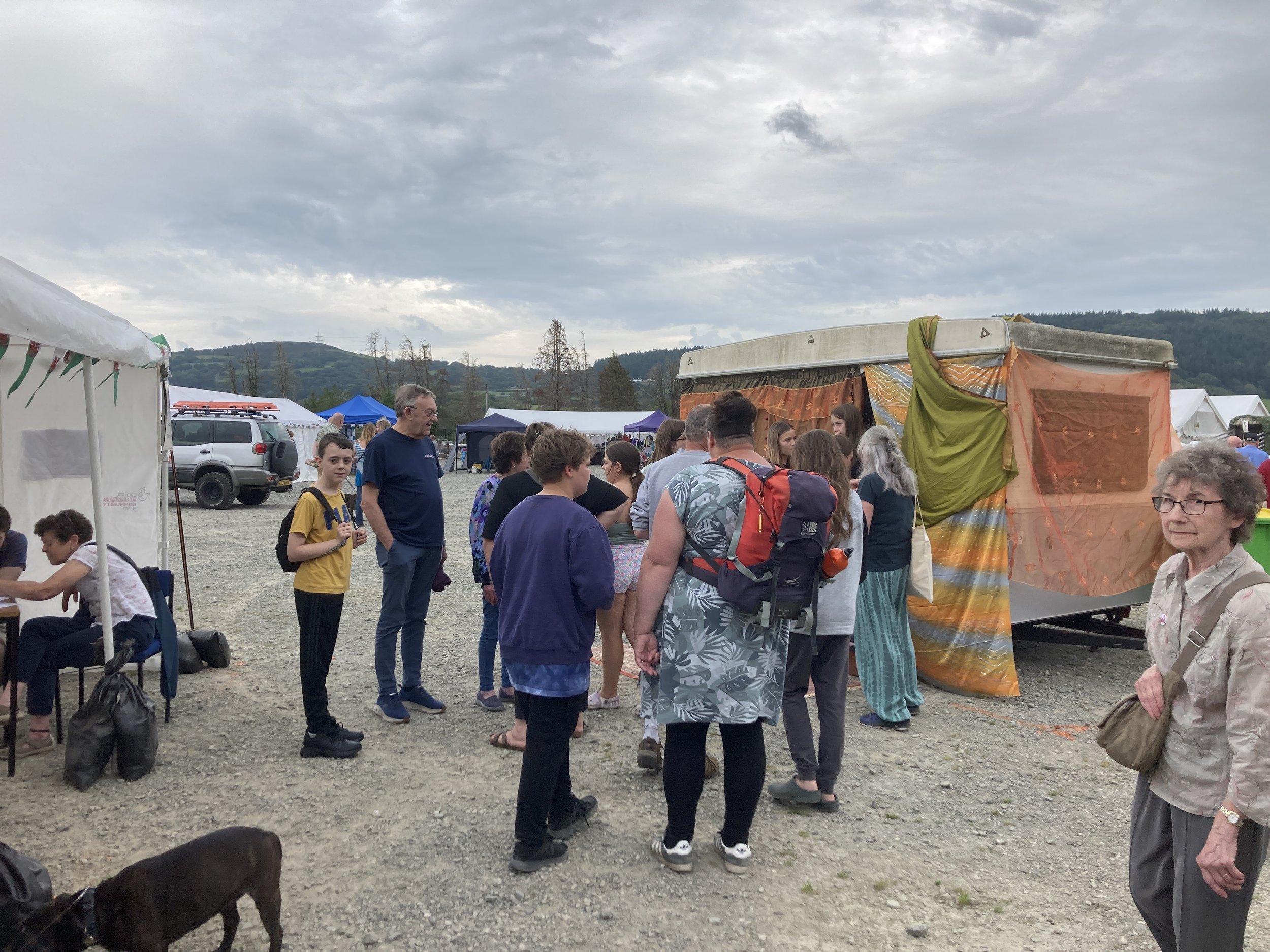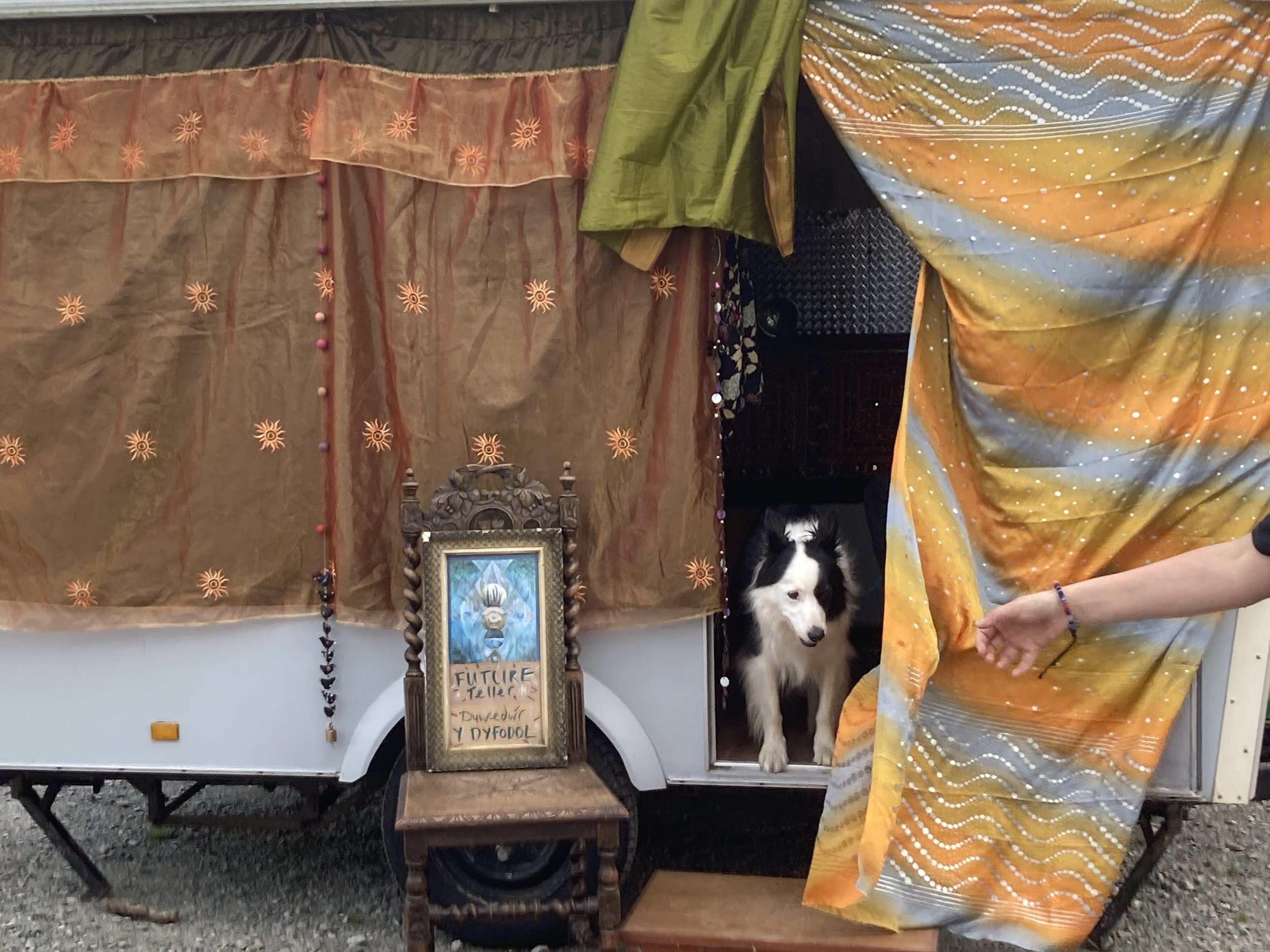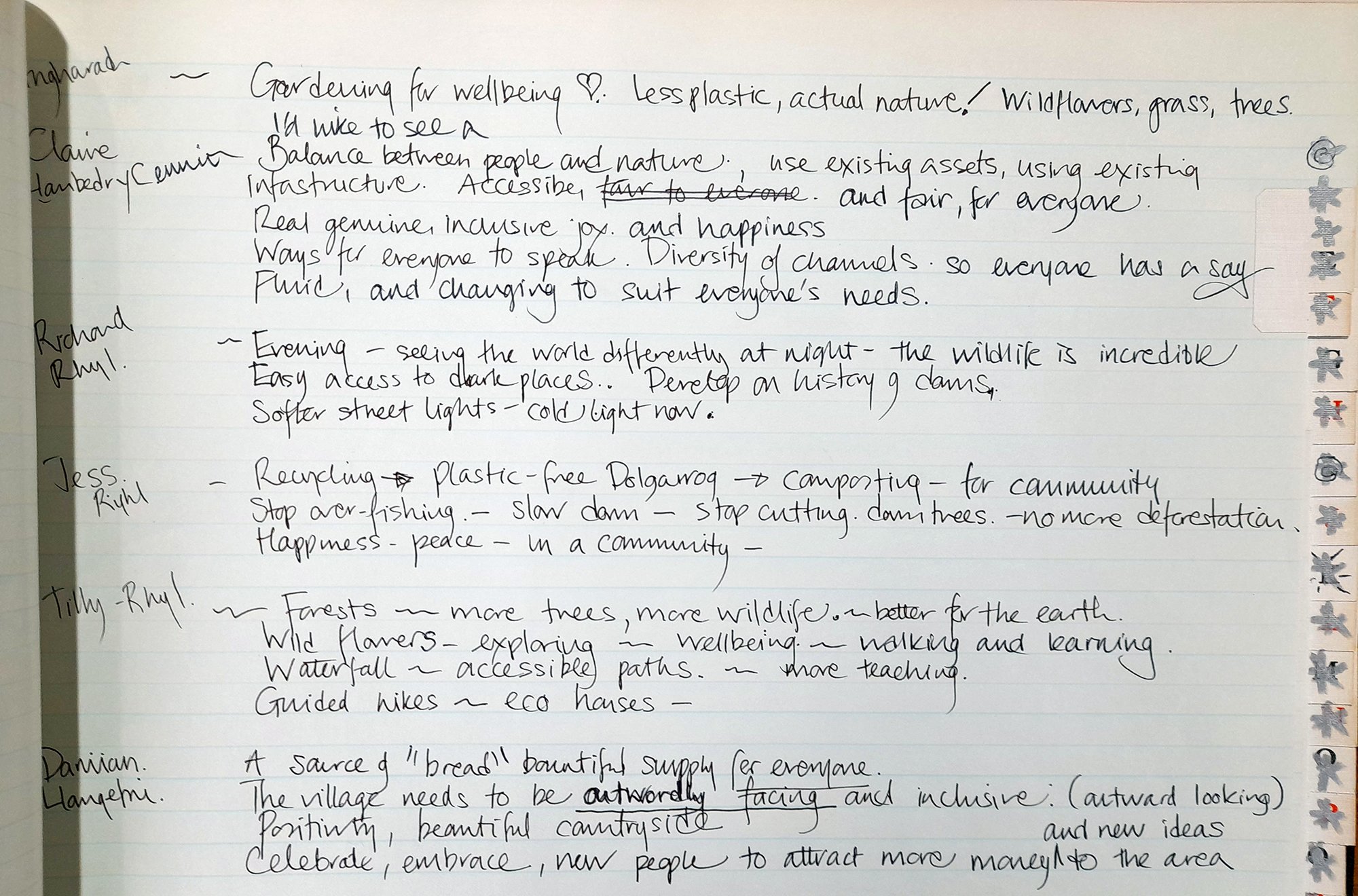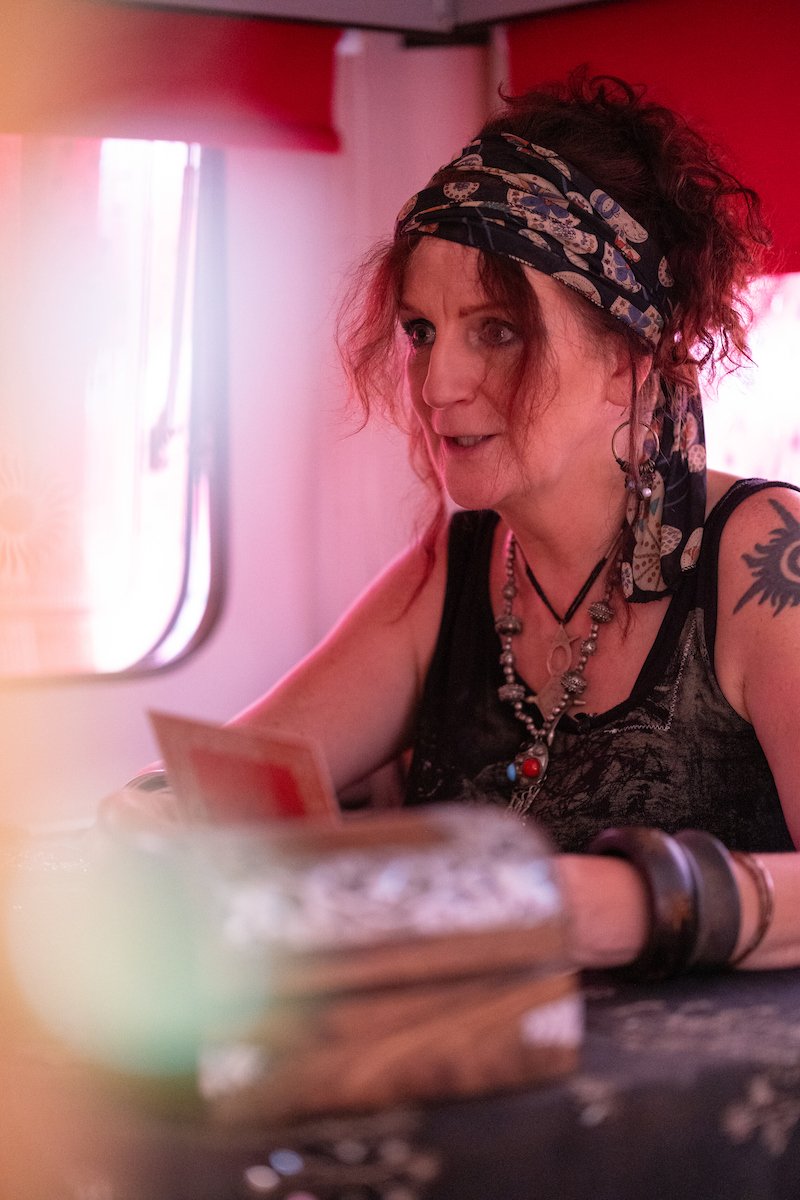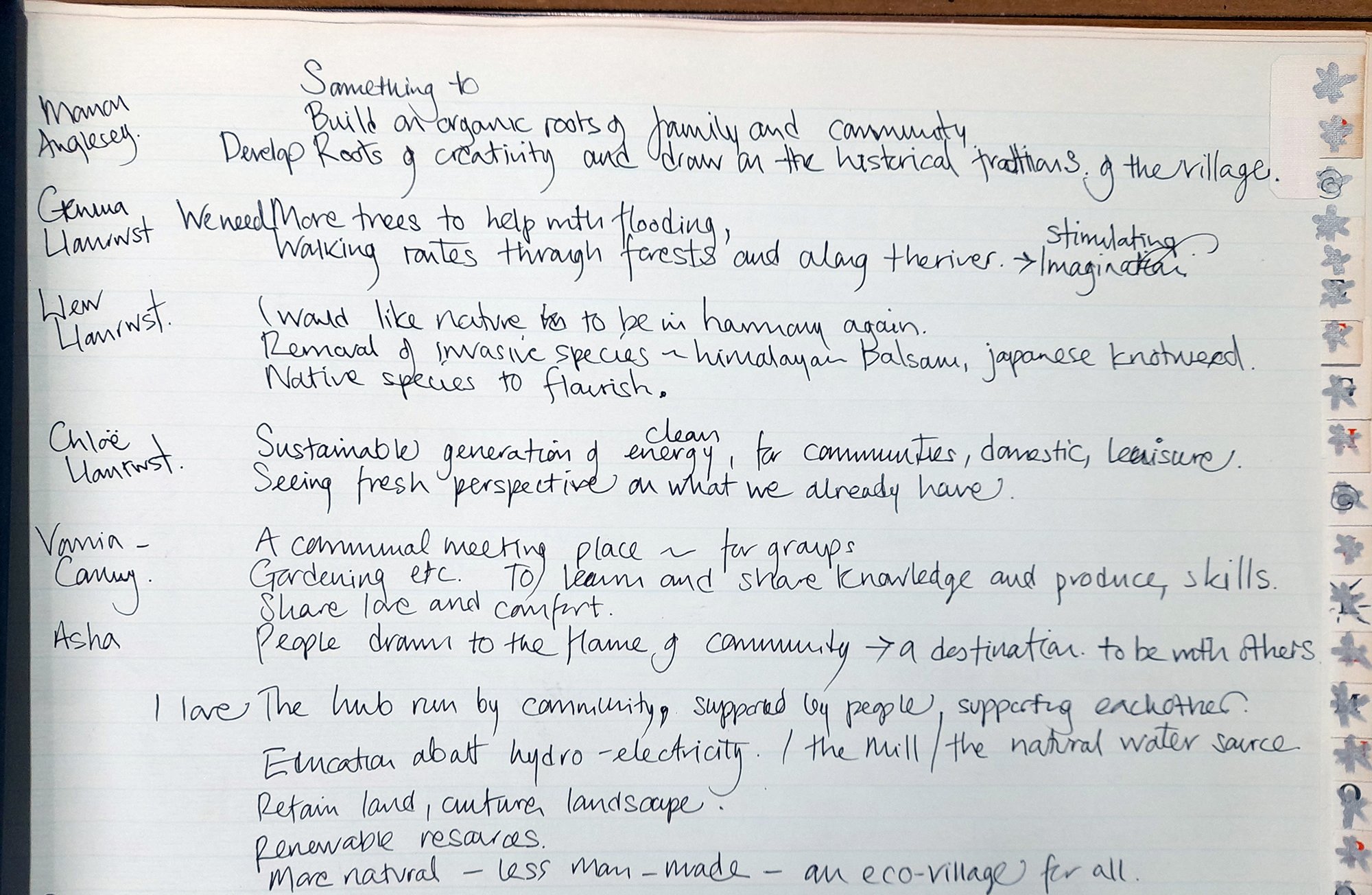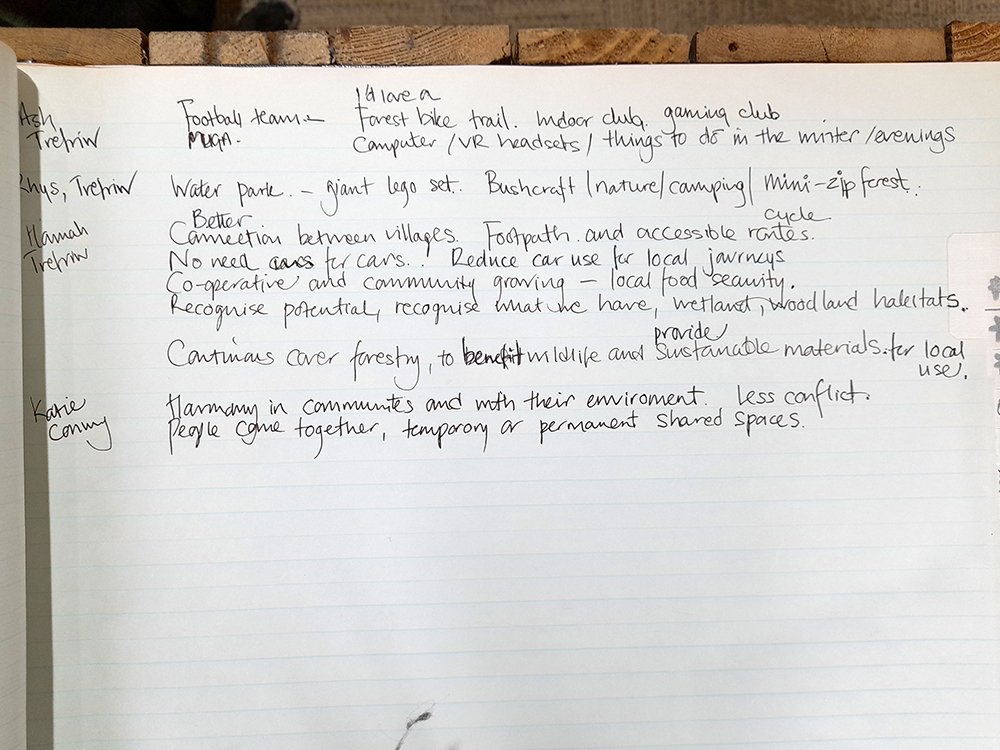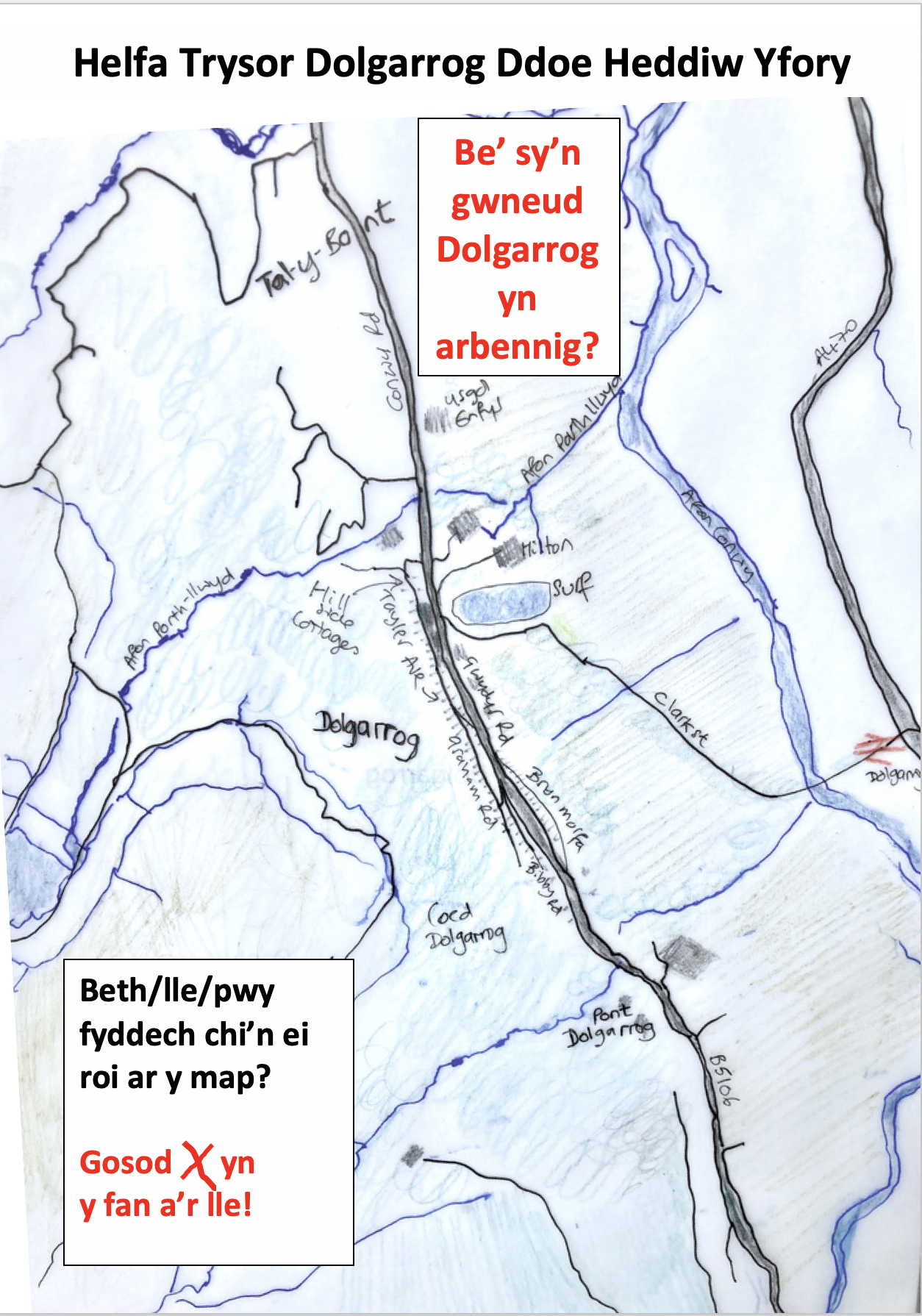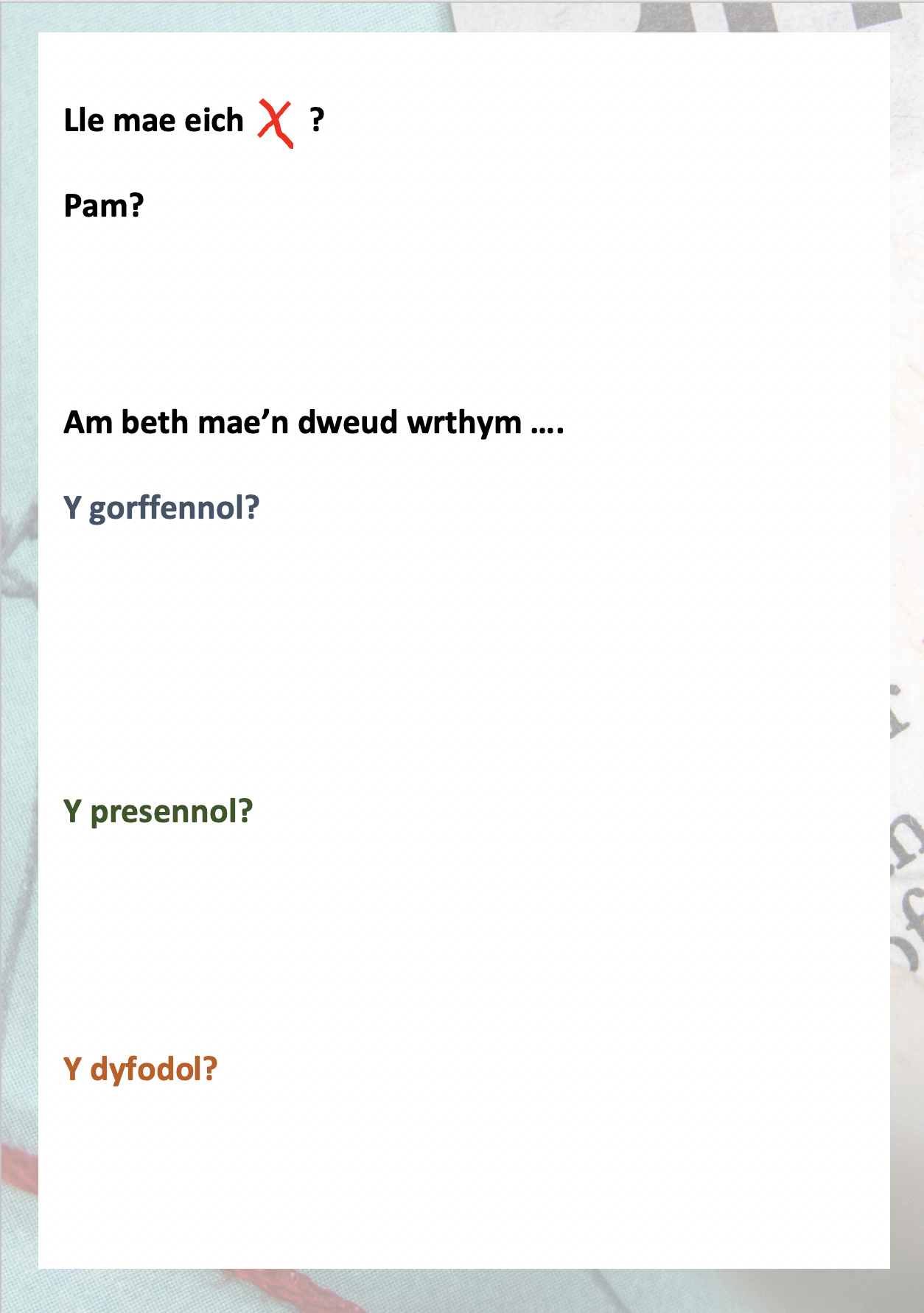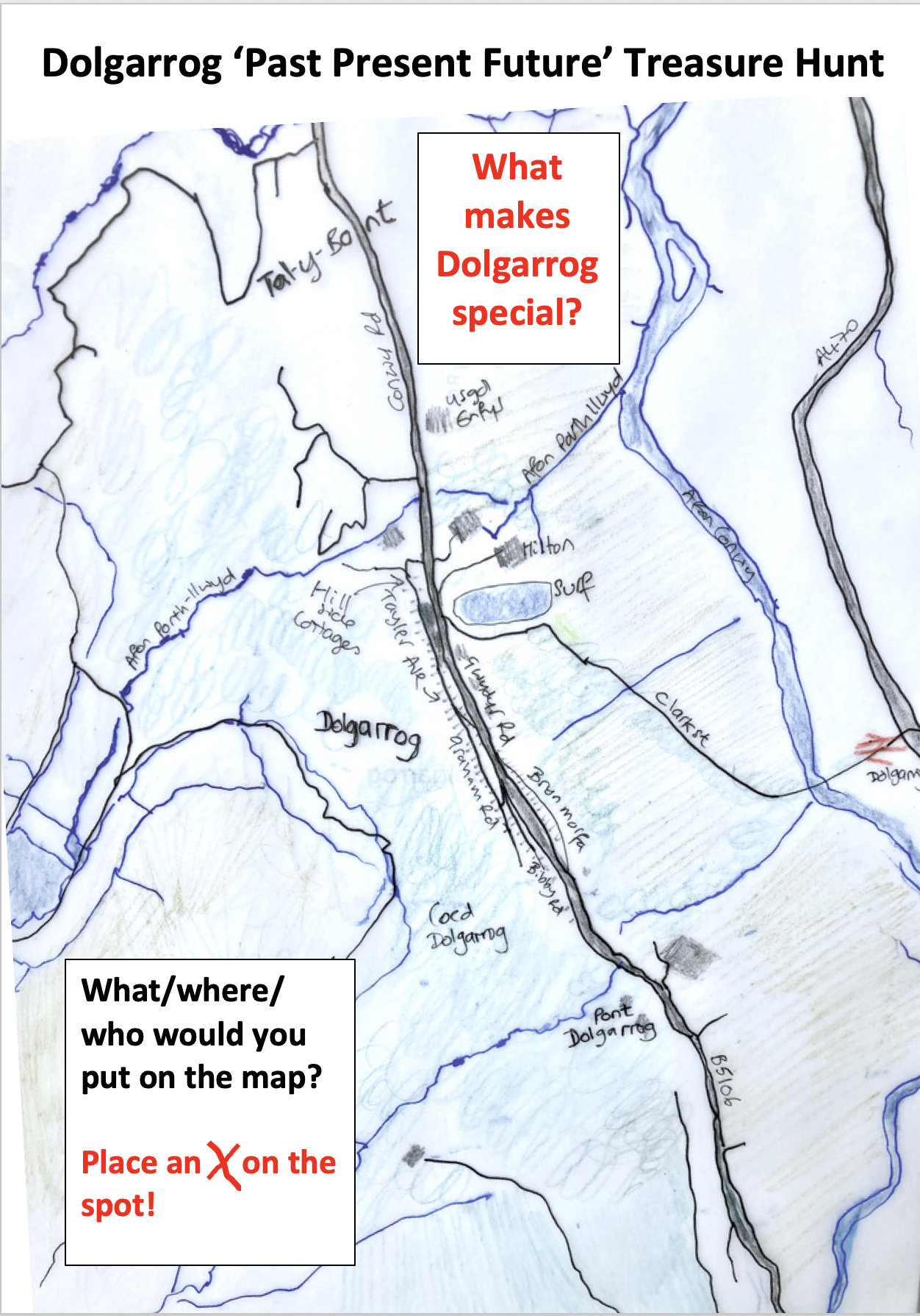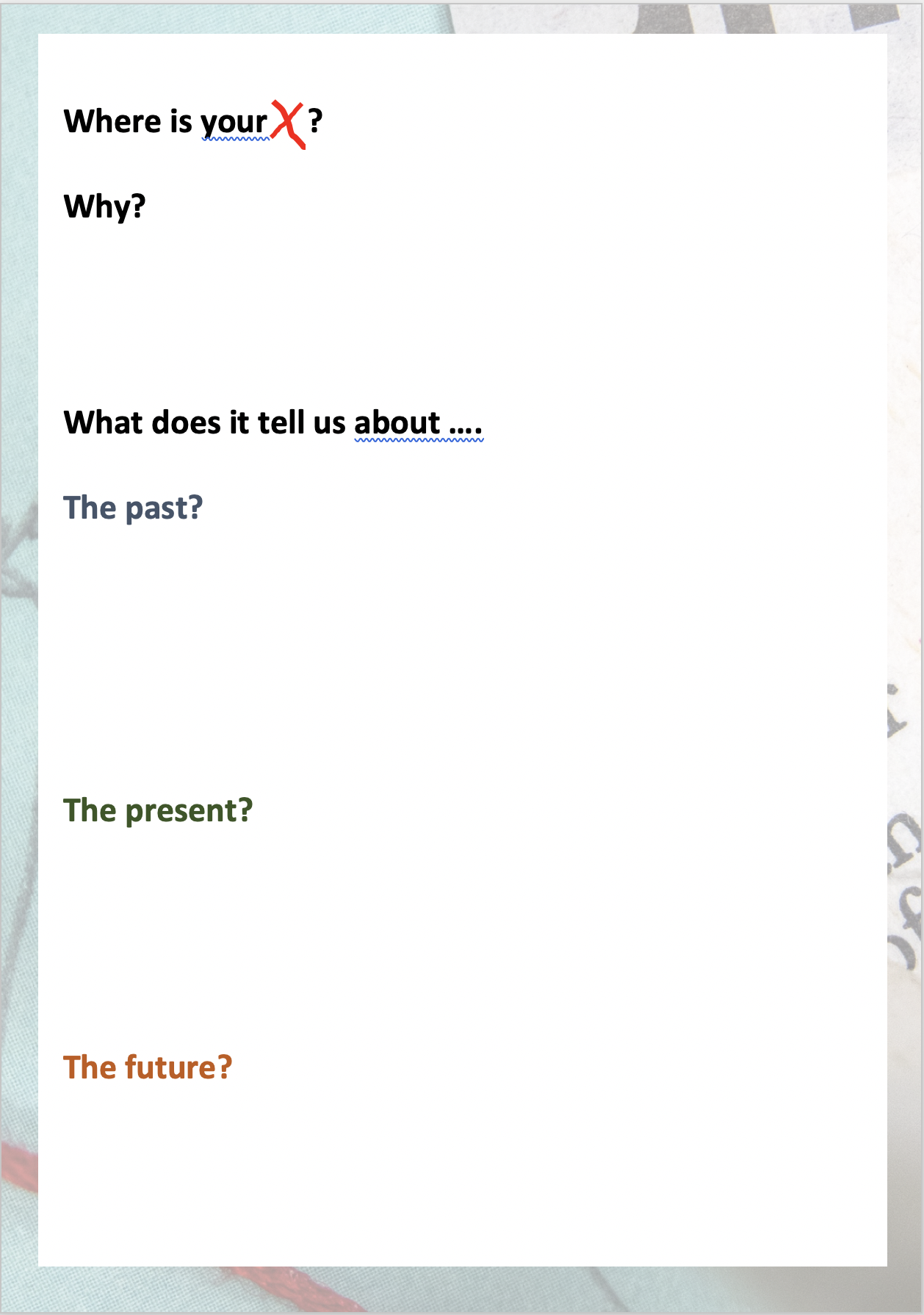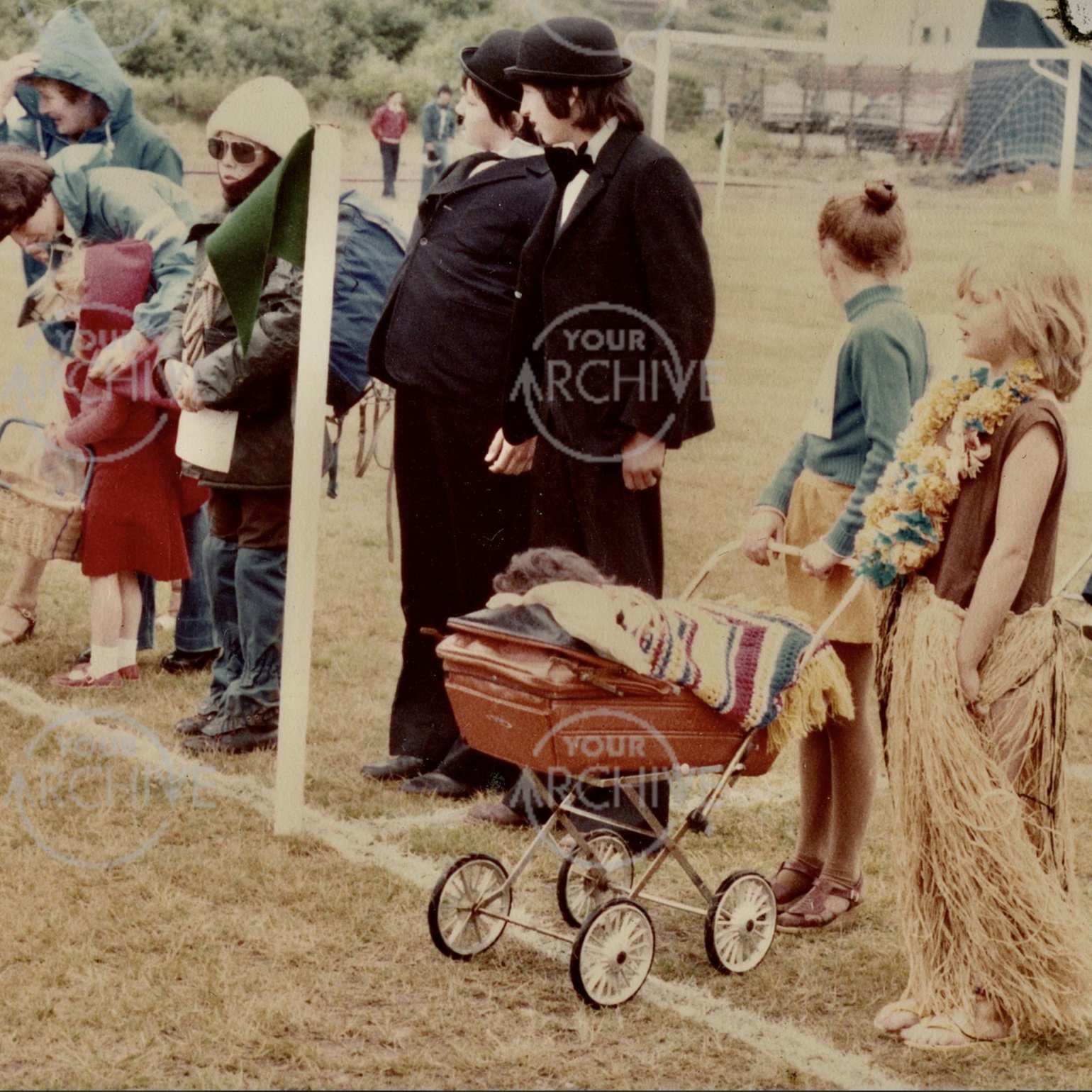Helfa Drysor …..Dolgarrog Ddoe – Heddiw – Yfory
Dolgarrog Past – Present – Future …..Treasure Hunt
Map: Isla Hatton, Dolgarrog Art Club
creating a dolgarrog treasure hunt/map through conversation
As part of Dyffryn Dyfodol and working with Caru Dolgarrog, Lindsey is working with people in the community (yn Gymraeg/in English), starting with the question: “What do you think makes Dolgarrog special?”. This could be something in the past, today or in the future. There are no right or wrong answers, it could just be something you love about Dolgarrog, or perhaps…
Map: Dave, Dolgarrog Art Club
Secrets, stories or legends
People and characters
Innovation and creativity
Spaces, places, habitats, buildings, plants, animals
Activities
Anything you discovered in lockdown
For each thing (or set of things) identified, we then explore how does this
Have its roots to people or things that have happened or existed in the past?
Get expressed in the present?
Suggest about the future (including how things that aren’t so good now could improve)?
And … is there a particular place in Dolgarrog that this relates to/illustrates this?
what we’ll do with the results
We are undertaking this work as part of the run up to the first ever Gwyl Garrog Festival in Dolgarrog (10th September 2023), instigated by Jackie Ley. The idea came from the Caru Dolgarrog group and other members of the community, including school children, are interested in creating some kind of treasure hunt or map or guided walk. We started by working with the community to find out what makes Dolgarrog special: What is it about the past and present of Dolgarrog that has shaped it to be the place that it is, what might this say about the future, and what places in Dolgarrog are associated with these things?
In Summer 2023, after gathering in the contributions, we explored the different possible shapes/formats/ways this could be turned into a treasure hunt/guided walk/online resource/map. For example, at the Dolgarrog Art Club, we did some ‘psychological mapping’ and the image at the top of this page, by Aisla, who is 15, is one way we could do this, a creative take on the ‘what three words’ location-finding app.
Currently we are working on:
An interactive exhibition in the church
We are creating a giant physical map that visitors can add to/amend at Gwyl Garrog (10th September 2023), and ‘fortune teller’ Lin Cummings will be using the results as inspiration for her fortune telling caravan!
Jackie Ley and I are then creating some maps to place in Dolgarrog in Autumn 2023, with links to the online map
online map
This map has been created by Lindsey Colbourne working with Caru Dolgarrog, and the community and visitors to Dolgarrog to find out what makes Dolgarrog special.
We were trying to find out "What is it about the past and present of Dolgarrog that has shaped it to be the place that it is, what might this say about the future, and what places in Dolgarrog are associated with these things? "
This first draft of the map is also informed by two books: The Men who Drowned Dolgarrog by John Lawson-Reay, and Walks in the Conwy Valley by Christopher Draper
With thanks to all who took part, and to the Dolgarrog Art Club for the illustrations.
PLEASE NOTE: The map makes no claims to be accurate, or comprehensive, but a snap shot of information and rough locations. All edits and additions are welcome!
Crëwyd y map gan Lindsey Colbourne mewn cydweithrediad â Caru Dolgarrog, a’r gymuned yn ogystal ag ymwelwyr i Ddolgarrog i ddarganfod beth sy’n gwneud Dolgarrog yn arbennig.
Roedden ni’n ceisio darganfod “Beth - o ddoe, heddiw ac yfory - sydd wedi siapio Dolgarrog i fod yn y lle ydi o heddiw, beth mae hyn yn ei ddweud am y dyfodol, a pha lefydd yn Nolgarrog sydd yn gysylltiedig â’r pethau hyn?”
Mae gwybodaeth y drafft cyntaf hwn o’r map yn deillio o:The Men who Drowned Dolgarrog gan John Lawson-Reay, a Walks in the Conwy Valley gan Christopher Draper. Gyda diolch i bawb gymerodd ran, ac i Glwb Celf Dolgarrog am y darluniau.
OS GWELWCH YN DDA, NODER: Dydi’r map ddim yn honni ei fod yn gywir, nac yn gynhwysfawr ond yn gipolwg ar wybodaeth a lleoliadau bras. Croesewir unrhyw addasiadau a gwybodaeth bellach!
Digwyddiadau - events
over 60s Jubilee Tea
Church exhibition
Gwyl Garrog Futures Tent and future teller caravan
Cardiau Cwestiwn - Question Cards
PLACES so far
Illustrations taken from ‘psychological maps of Dolgarrog’ by Dolgarrog Art Club, November 2022
the people and community - the site of the british legion (remembrance gardens)
Past: “There was a strong community spirit when the Aluminium factory was here”. “I used to be able to start by the Newborough and name everybody in every house. We all knew each other. Most men worked at the Aluminium works so we all just got to know each other, and we went to school here so we’d all just natter together” “I was in Trefriw for about 20 years. I came to Dolgarrog a lot before I lived here - people haven’t got as much money, but they are generous and kind, and I always knew it was a nice place to live. People would help if something happened, they’d put their hands up to you if you were walking or driving in the car. Probably more in the past than now though” “The community is quite dispersed but there is a sense of solidarity - you could rely on people”.
And thinking back before the Aluminium factory, Porthllwyd was the site for a “Cataract Park” proposed by JR Gethin Jones and WJ Roberts in 1901, a sort of mountain pursuits tourist resort along the lines of Aviemore, focused on the falls of Porthllwyd, Rhaiadr Mawr – the Great Cataract. Visitors would come by steamboat, stop off at a specially constructed quay and continue up the mountain via a tramway. Plas Rhaiadr Hotel was built in 1861 for tourists to enjoy the mountain scenery. But their plans were overtaken by the erection of the Aluminium factory by the Aluminium Corporation in 1907: Plas Rhaiadr Hotel was purchased and became temporary home for the Aluminium Corporation’s works manager. In 1913 it became the Dolgarrog Hotel and then Porthlwyd Hotel but both Porthllwyd and Dolgarrog waterfalls were dried up as their waters were used to power the factory and the scenery now mostly pipes and pylons. In 1927 it became the British Legion. Would Porthllwyd have become the thriving centre of Dolgarrog if tourism had won over industry?
Present: “The people are what makes Dolgarrog special” “People are very friendly and interesting to speak to.” “There’s an eclectic mix of people and a variety of experiences” “There’s a vast variety of peple here even though Dolgarrog is so small. There are people who have been here for generations, their experience is centred on the valley and they haven’t travelled far. Others are here by personal choice, they’ve come here because they used to visit family here or come on holiday here or were just driving through.” “Although it takes time to get to know people, people are friendly and welcoming.. the sheer range of characters! That’s probably what makes it special - the variety of backgrounds and occupations”
“I put in a best kept village application to Conwy Council and we were criticised for a lack of community spirit and facilities” “Many people are keeping inside more since COVID. We’ve not even got anywhere to get together - not even a cafe. The Surf/hotel are quite expensive.” “People go to the memorial hall in Tal y Bont, used to be used for lots of things but now it’s struggling to keep going.” “The Canolfan used to be a health clinic in the 1960, and then was reconfigured for the community. But it doesn’t really work very well, its quite small”
Future: “We need regular afternoon teas for the olders and Bingo” “Could we get a grant to do things in existing community spaces or even build a new space, because the spaces we have now don’t really work or are too far away (eg Talybont)”. “More concerts in the hall at Talybont - bring music to people!” “I’m really proud we are getting our own festival! It feels like the community is coming together for the first time in ages - if we can do this each year maybe it’ll help get people out of their homes and feel more like a community again”
My back garden // the garden city
Past: Gardens are at the heart of Dolgarrog! In 1908, Mr A. Morley Jones, an architect in Llanrwst started designing new housing, hotels and shops for the Aluminium Corporation in Dolgarrog, based on the idea of the ‘Garden City’ (an idea for a self-sufficient community developed by Ebenezer Howard in 1898 to capture the best of the countryside and city while avoiding their disadvantages). Eventually 100 semi-detached houses (completed in 1925), a hotel and church were built for the Aluminium factor workers, one of the largest housing developments in Wales at the time.
Present: “Moving here from a city, I love it when I go out into my garden, and 5 hours later i’ve done 20 minutes of gardening because I’ve been chatting to my neighbours”. “Almost all the houses have amazing views!” “It’s not over developed - there is still a lot of open spaces that can be used by the public to walk/gather, and Dolgarrog is in a good spot with mountain behind, river in front and big towns either end of the valley.” “i used to drive through Dolgarrog, I never expected to live here. But I found the people very friendly, its not far to the hospital and the houses have a lot of room. I love the views! So all this was important, although it isn’t very Welsh speaking, there are quite a lot of us who siarad Cymraeg”. “We moved here from Kent. We weren’t looking for a house here, but we saw these houses and our house, which is big and quirky with lots of land, which is what we wanted and we fell in love with it”. “There’s still a lot of ‘garden’ in Dolgarrog - and even a Garden Hotel and Garden Art”!
Future: How could the ‘self sufficient’ garden city idea influence how Dolgarrog shapes sustainably in the future?
The point at which the water is released from the power station
Past: The industrialisation of Dolgarrog is linked to gathering and controlling water from the landscape behind it, to create power for the Aluminium works. There are 5km of leats and 5.5 miles of tunnels across the Carneddau, gathering water from 6 lakes and a 60km square catchment area to bring down to pentre fach of Dolgarrog. One of the most extensive pieces of landscape engineering in the whole of the UK.
Present: “The drama of the pipes and hydro plant”. “It’s like the whole of the Carneddau are being harvested - not only creating power, but also supplying water to the Surf and drinking water for the whole of Dyffryn Conwy. I’m fascinated by the point at which this control is let go, and the water is realeased” “There’s a symbolism about how the hydro is run now and the extraordinary piece of infrastructure and engineering at this time of renewables: using natural resources, not consuming fossil fuels. It is down to earth, grounded. It is sophisticated, pioneering and shows what people here are capable of”
Future: “There are limits to how much hydro you can have, but it is the future as well as a symbol of where we need to be” Water has been at the centre of why Dolgarrog exists… in the future could it be a localised power source? A community owned or have some direct community benefit? could it generate income that supports things in the community?
Y Siap y dyffryn // lle oedd y droed ifan goch yn dolgarrog
Past: “I am obsessed with the three peaks opposite Dolgarrog, like a triptych, shaped in the same way by glaciers. Dolgarrog is at the narrowest part of the valley, like a gateway.” One of these rocky pinnacles was a favourite resting place of Ifan Goch, the Giant. He was often seen here, standing astride the valley like a colossus. With his right foot firmly planted in Maenan and his left rooted in Dolgarrog, he would bend to wash his face in the cooling waters of Afon Conwy. Suitably refreshed he would turn, plonk his backside on this ledge and drink in the view. This landscape, its shape and its water has shaped Dolgarrog from the start. The ice that shaped the valley was over 1000 feet deep, carving out the valley and causing ‘hanging valley’s where the path of rivers were cut off, causing the beautiful waterfalls.
Present: “So many - people who live in the valley as well as tourists - drive through Dolgarrog, a gateway, passing through without stopping. I’ve started feeling more connected to Dolgarrog as a place now that I’m involved with Caru Dolgarrog and getting to know people and Hwb Dolgarrog.”
Future: What would make Dolgarrog a place people in other parts of the valley feel connected to? How can we work with water in the future to connect village and landscape intimately again?
ystafell y drws coch // yr enfys // Henryd
Past: Just near the bridge over Afon Porthllwyd was a corn mill with two pairs of stones, one for wheat and one for barley. In 1810 it was combined with a new paper mill – one of only 15 in the whole of Wales. It used linen rags to make writing paper. Because the mill at Porthllwyd had an oat drying kiln room, which was always warm and dry, in 1885 the villagers started a Sunday School, ‘Llofft yr Odyn’ at the mill. It was known as ‘Ystafell y Drws Coch’ because you had to go through the red door to get to the right room, to avoid children wandering into the mill workings. This is part of the strong tradition of self-education or community education associated with the non-Conformists. A ‘mainstay’ of y Llofft yr Odyn was gifted poet, writer and singer, John Hughes, who lived at Ceunant, who attended despite being disabled and it taking him hours to get down (and up!) the slope. Similarly, famous Bard, Gwilym Cowlyd was educated at Sunday school at Capel Llwyn y Gloyw.
As more ‘formal’ schools were established, the language changed to English (together with the tyranny of the ‘Welsh Not’) and gradually from the 60s, Welsh was ‘allowed’ back in. “I went to school in Dolgarrog and it was English-speaking then, but we’d do Welsh on Fridays. The school at Y Bedol, Tal-y-Bont was Welsh speaking and there were rivalries between the two schools.” “I went to Henryd School - we had a week in English and a week in Welsh”
Present: On the other side of the road from Llofft yr Odyn is Ysgol Dyffryn yr Enfys, which is tying the school and the community together once again. “It is now a Welsh speaking school, and because of this parents are learning Welsh, so i think this is bringing yr iaith Cymraeg back into the heart of the village”. “Ysgol Dyffryn yr Enfys is becoming part of the community again – in terms of integrating the Welsh language and also you can use really nice rooms there”
Future: "I think in the future more people here will be speaking Welsh because with a Welsh speaking school, parents are learning to speak welsh”. Could community and school do more together?…. “What about really informal Welsh classes for parents?” “Could we have a treasure hunt or guided walk or something around Dolgarrog so the kids can find out about and contribute to understanding Dolgarrog?” “Could there be some evening classes?”
The site of the old football pitch (now the Surf car park)
Past: Within the Aluminium works a football pitch was built here in 1919 , and Dolgarrog had a thriving football team. It was the site of lots of different teams in the valley coming to play each other, helping to knit the valley together. “The only reason I’d stop in Dolgarrog was when we were playing them at football!” “One thing the refugees asked about is whether there was anywhere to play football. In the end they had to just play in the car park. Its such a shame because if we had a football pitch this would have been one way to bring the community and refugees together, because you don’t need to speak the same language with football”
Present: “Now this is a car park overflow. I think there’s also an all weather pitch behind the hotel? But this is closed. There used to be a swimming pool too. These are ‘ghosts’ of more active times and places where the communty could come together.”
Future: Gwyl Garrog Festival will be held here in September 2023. Is this the beginning of re-sharing spaces between industry and village? Could the all weather pitch be opened to the community?
the shops
Past: “In that little row of shops I remember Mr Simon ran the paper shop (where the takeaway is now), and there was a cobblers, a greengrocers with its own bakery and deliveries by cart horse, a hairdressers, a drapers selling material, knitting, needle work things, a Post Office, coal merchants”. “In 1978 the local shop re-opened and my mum said ‘Oh you must come and see the shop’ because it was the first shop to introduce helping yourselves, taking a basket to go round. There was so much stuff in there, you could get everything, and it was really friendly”
Present: “There is no longer a Post Office so people have to go to Tal-y-Bont, and then they also get their shopping there, so they don’t use the shop in Dolgarrog really.”
Future: “It’s difficult because you’d have to carry so much stock to make a shop work. But maybe if we had a friendly shop that is also a post office and cafe, maybe run by the community, that might work? Look at what they have in Trefriw!” “We need something multi-purpose - a commumity cafe and shop, run by community , not for profit making so we keep prices down.”
hwb dolgarrog hub//creativity
Past: This shop has been used for all sorts of things in the past. Before lockdown this was a surf shop, but when people left, Clive took it over for his furniture and invited people in to show and sell crafts. “There’s a history of creativity here that people might not know about — in the 19th century there was an artistic colony at Llanbedr y Cennin and Tal-y-Bont who set up a studio with gallery, classroom, billiards room and entertainment space. It grew from 7 artists to 150 and they helped set up the Royal Cambrian Academy of Art which moved to Plas Mawr, Conwy in 1886”.
Present: “Hwb Dolgarrog has become important to the community as a meeting space (now more than 2000 members!). Its important space in the community where peopel meet and talk. It is also supporting creativity and income generation with a mix of crafts and arts, where Knitting Nain shows alongside 15 year old jewellry maker Aisla and professional contemporary artists.” “I don’t think there’s anywhere quite like this – it’s a really eclectic place” “This is where I hear all the local gossip and catch up on what’s going on”
Future: Perhaps Dolgarrog is developing its reputation/image as a creative place, linked to the pottery, garden art and the new Gwyl Garrog and linking back to the spinners and weavers of Dol-y-garrog. Maybe we could have a sculpture/creativity trail around the town? Or artists studios?
ceunant//Crochendy porth llwyd
Past: This used to be ‘“Ceunant” and is the sole surviving cottage of the old village of Porthllwyd which was destroyed by the Dam Disaster flood in 1925. It used to be two cottages, one side made of dressed stone and the other from boulders from the river. In one side lived Mary Jones who made a living after her farm-labourer husband Owen Hugh died, by knitting socks and doing people’s washing. Her son was a gifted poet, writer and singer and disabled – he was so loved by the village so they bought him a tricycle to make it easier for him to get around.
The two derelict cottages have been restored over the last 30 years into a home and pottery studio that has been featured in books and magazines
Present: Since 1990 Ceunant has been home to Porth Llwyd Pottery. “Its a magical place - like a gingerbread house, and the woodlands are inhabited by doormice!” Potter/ceramicist Vicky Buxton is passionate about researching and recording local history because “ i brought these old cottages which is part of the history of this place. I spend a lot of time wandering around the area - like yr Ardda - and thinking of life in the past and what the place was used for. Not its all abandoned with commercial pressures and economics. We are in danger of losing local history as people like Bev Wyn are lost”.
Future: “What do we do with the place in the future?” “What does it mean to be a good neighbour today?”
coed dolgarrog / / waterfalls and ruins in temperate rain forest
Past: This was the site of Dol-y-garrog – the original Dolgarrog village alongside Afon Ddu. It was the site of medieval innovations in water power, where the Monks of Maenan Abbey establish a fulling mill to process wool from sheep on the uplands. In 1807 this became ‘Pritchard’s Mill’, a state of the art woolen factory. A sawmill was built in 1854 to process timber from Coed Dolgarrog (you can still see the large coppice area in the woods) and a bit further up are the remains of ‘Ffactri Uchaf’, the Dolgarrog Pandy Cloth and Flannel Factory. These factories closed when ‘steam power replaced stream power’. The house just by the bridge is the only remaining building – it is the only surviving house of Dol-y-Garrog and used to house weavers, carders and spinners and then families of workers at the Aluminium factory. Mrs Mackenzie and Mona, her 8 year old daughter died in the 1925 disaster. The building became garages [and now a home again]
Present: Home to the largest oak woodland of its kind in North Wales, a temperate rainforest and teeming with flora and fauna. “I love the way you just stumble across this magical place. The sudden surprise of finding waterfalls, the ancient forest, the ruins. Like jewels of interesting things that capture you ”. You can still walk on the old sheep tracks leading to the uplands above the wood.
Future: Coppice? Water power? Nature walks? Liz Butler is going to do a walk/map on famous trees on Allt Wyllt.
times of transition// industry and village
Past: “If you think back in history, its why most towns and villages where were they are - they were built around a work place”.“There has always been this industrial side to Dolgarrog, and when it was the Aluminium works, with almost everyone in some way being connected to it, with jobs or providing things like social events and gala days to the factory or its workers, it was part of the village.” “We used to have so much fun. My favourite was its a knock out!!”
“When the factory closed, everyone had to find jobs elsewhere. If you are brought up in a place like this with one job opportunity, you don’t think about moving further afield. But when the factory closed, everyone ended up with a job elsewhere, and I think quite a lot of people had a better job in the end”. “I arrived here just as the surf centre was opening. It was an interesting time to arrive, like Dolgarrog was on the cusp of change”
Present: “There seems to be a split between the business side of the road and the villagers - there are some examples where they are starting coming together again though, like the Bingo night at the Surf, RWE creating the dragon sculpture” “RWE do quite a lot for the community. I think they show that even though not many people work there anymore, you can still feel like you are part of the community. Like you care about where you are, even though you are a business” “It has been hard since COVID to get people out of their homes - i think that’s really affected us, its been difficult to get thngs going again.” “With Surf Snowdonia i think there is a clash of purpose - bringing people in and generating money vs what the community wants”
Future: “I’m hoping that Gwyl Garrog in September will be a way of bringing the ‘two sides’ of the village closer together, like using the spaces at Surf which will bring people in AND create something for locals” “Now everyone has lots of different jobs and work in different places rather than in one place, I think we need to work harder to still bring people together. If the workplace isn’t what keeps us here, we need something else. Maybe we need to work out what that is?”
THE BOULDERS//
Past: The area of the Boulders was originally a hamlet called Porth Llwyd, namd for the gorge and falls behind it. There used to be 10 dwelling here including a bakehouse, farm, smithy and watermill. The Dam Disaster of 2nd November 1925 destroyed all the buildings and brought the boulders down. “The disaster was a terrible tragedy but it led to new laws about the safety and testing of dams - before the disaster there was no regulations at all” “The boulders are a symbol of so much innovation in Dolgarrog - the dangers of something so big, so new, and also how community adapts and changes with it, and how industry needs to work with community”
Present: “The boulders is now owned by the community council it was donated by RWE”." “ I think this is the heart of the village - because of its history, nature, natural swimming hole (we no longer have a swimming pool), a place for walks.” “It’s magical up there when the sun comes out” “There’s a massive presence, always feels there is this extraordinary disaster… it must have bred a degree of caution in the people, possibly risk avoidance, which may mean the place isn’t as vibrant as it could be?” “Children - including my children' - spent hours up there. But children also drowned there. It’s a bit weird living in a village with such a terrible disaster, it’s like one tragedy after another sometimes”
Future: Could more be made of the biodiversity and access here? Maybe a space for outdoor art classes? Forest school?
the lord newborough // (no longer) the only pub in the village
Past: Ddol Hyfryd was originally a farmhouse, converted into ‘The Lord Newborough Arms’ in the 1850s and named after the area’s main landowner (Lord Newborough of Glynllifon, since medieval times). Originally run by the Thomas family (who were also game keepers), The Lord Newborough served the growing tourist trade, farmers and mill workers of Dol-y-Garrog. The building was a local pub for the Dolgarrog villagers for many years. “Beer used to be served in big jugs rather than on tap. It was mostly men, and Welsh-speaking. Rogers the landlord used to say you’ve got to be a bit of a politician to be a landlord - to know how to talk about politics and football and try to calm things down when there was conflict in the village”. In the mid-1990s it became the only restaurant in the village, mostly serving traditional Welsh food, sourced locally from the Conwy Valley. The pub closed for business in September 2010, and is now a private house.
Present: “We no longer have a pub! We now have to go to the Hilton to have a drink. But it’s so different to how it was, going to the pub. There’s not the same atmosphere and the price of the drinks!…You don’t have that connection with the Landlord, there isn’t the same feeling that it is part of the village” . Although the pub is closed, the ‘Newborough Path’ is an important place for leisure and walks down to the railway bridge. And the Hilton is now offering a discount to local people and hosting a quiz night.
Future: “I’d love to have a pub here again but I don’t think there’s the same need for a pub with young people, they don’t go to pubs do they? I don’t know how to do it, but I’d like to find things that appeal to younger people too, so different types of people mix together" “Maybe we could have music nights or something at the Hilton, or in the community centre?”
the building behind the hedge // places to get together
Past: This building used to be the elaborate Assembly rooms, built in 1918. It had a stage and lavish scenery and used to be the main hub of the village where people could come together for entertainments , dances and film shows and even karate. It is the last remnant of a whole raft of facilities and events that brought people together in Dolgarrog, including amateur dramatics, glee parties, a pierrot troupe, lectures and discussions on important topics, sports days and an annual carnival. There was a children’s playground and tennis club as well as the football pitch (1919), a rifle range. A ‘Bulletin’ was published from 1918 onwards which was a bit like a gossip magazine.
Present: “One of the best things about Dolgarrog is the eclectic/quirky/variety/friendly people. But there is no-where for us to come together anymore - the Assembly rooms is now in private hands.” “There is no community space for the community that is fit for purpose, where the whole village can come together” “I used to love the carnival”
Future: Can we create spaces to come together again?
TAILOR AVENUE/ picadilly circus - HOUSING FIT FOR THE FUTURE?
Past: Dolgarrog only had 67 dwellings in 1918, and with so many people coming to work at the Aluminium factory, Dolgarrog had become the most crowded village in the country. So the Aluminium company decided to build a ‘garden city’ to provide more accommodation. In 1922 McAlpine’s opened a quarry to the south of Porth Llwyd Falls in order to excavate stone to build foundations, roads and terraces for new housing. Abdon Clee Stone Quarry Company of Shropshire then built 100 semi-detached houses from pre-fabricated concrete - each one cost just £625 each. Taylor Avenue was one of them, and named after a director of the Aluminium Company. It was one of the largest housing developments in Wales at the time and there have been no major developments since. The first house was finished by Autumn 1925 and let at a rent of 12/6d a week. But this was much more expensive than the old cottages which was just 2/6d a week, and villagers couldn’t afford the rent. So some houses were adapted to flats, with external wooden staircases to one of the three bedrooms. People still didn’t move in, until the company decreed that any new employee must live in a company house. Street lights were installed, the first in North Wales. And at first, electricity was at a fixed charge, but Dolgarrog began to be known as ‘Picadilly Circus” because as well as street lighting, everyone left their lights on. So charges for electricity used were introduced. WHEN WERE THE HOUSES REDONE? “13 houses in Taylor Avenue/Graham road had to be evacuated in about 1966. A massive crack opened up and I could stand in it up to my knee! The personnel officer came and told me I had to get out. So we moved into chalets which were built where Surf is. We stayed there 18 months before we could move back in. It was quite nice in the chalets - there was a tennis court in there and everything but I was happy to go home”. “I just knew Taylor Avenue was the place i wanted to live”
Present: The distinctive style of the houses, together with the ‘garden city’ design mean that people are attracted to houses in Dolgarrog. And this contributing to ever rising housing costs together with spiralling electricity costs are causing crisis again. “We bought our house for £1,300 in the 1970s. I don’t know how anyone can afford them nowadays, especially the youngsters. And there’s not many places to rent either”
Future: “Could we as a village get a grant to update the housing, including rented houses, because we haven’t got any gas here? Like insulation and solar panels and air pumps?”
Eglwys y Santes Fair // St Mary’s church
Past: Original church, built in 1913 for the aluminium works was lost to the flood in 1925, the bell tolling as it was carried away by the flood water “the bell tolled as if calling for help as it was carried away”. In 1926 the Aluminium Company converted an old farm building into a church, but after 50 years it was in a terrible state of repair and it was replaced with the current church in the 70s.
Present: “The area the church serves has changed - we are now linked to a bigger area, which is a good thing - Betws, Trefriw, Dolwyddelan, Penmachno, we go to each other’s churches. We also link up with things outside the church, helping with the food bank in Conwy, walking grounds, each season we do diffferent things, its about how God is in the world.” “The church has coffee mornings and events during the summer and winter” “It was the Church that stepped in to help with the refugees, they got a team together to work with the refugees and doing this also helped to bring the community together because people got to know the refugees and i don’t think anyone else could have done that”.
Future: “Could we make the church a more useful space for meetings and events - we’re getting a compost toilet which would help but also it’s quite cold” “I think things, life, will only get more difficult in the future and the church and the community involved in the church will be more and more important in being there for people who are struggling, and helping to connect people”
dolgarrog - fancy dress capital
Past: “We’ve always had a special love for fancy dress in Dolgarrog!”. A fancy dress ball and procession with floats (including one with an effigy of the Kaiser who was beheaded when the procession reached Tal-y-bont) were held on Victory Celebrations celebrating the end of the 1st World War in July 1919 (fancy dress included King John signing the Magna Carta, medieval knights, nurses, pirates and soldiers). When the Cowlyd Dam was opened in 1922, a fancy dress ball was held in the Assembly Rooms. The dresses ranged from A Restorian Courtier, a Circassian Princess, a lady of the harem, Autum, Night, a Colleen, a Dutch girl, Goody Two Shoes and General Knowledge! People still remember the dressing up today: “When the Aluminium factory was still operating, we used to have so many events where we’d dress up - Dolgarrog was the capital of fancy dress! There was the carnival and Rose Queen parade and parties” . “I remember Mr Jacks at Plas [Maenan]. In the summer we’d all go - all 800 people - to have a party at his house. I used to love them as a child! There were sports and a picnic and we used to dress up in all sorts of different costumes”.
Present: Maybe people still dress up for parties? Do you? You can see lots of pictures in the photo-archive .
Future: Gwyl Garrog Festival will be re-instating the fancy dress tradition with dragon costumes - for humans and for dogs!
TRANSPORT innovations in Dolgarrog
Past: Dolgarrog has always been well connected. There was the Roman road from Canovium through Llanbedr-y-cennin bertween Penarddda and Moel Eilio. Caerhun to Chester and Caernarfon Tal-y-Bont. Possibly using route of pathways established in stone and bronze age. The Ferry/ford at Porth-lwyd used to connect the Roman roads?
“When the Aluminium factory arrived transport was improved in lots of ways because they had to get workers and materials in and out.” Have a guess when the first electric car arrived in Dolgarrog? It was 1916! It could do as much as 20mph and was used by the Aluminium corporation to transport key workers from Trefriw to work in Dolgarrog. The car was plugged into the power station to be charged up during the day.
There were also two railway stations - a main line one over the river, which was closed due to floods and is the ‘least used station in Wales’ and the ‘siding’ in Dolgarrog itself which was opened as a branch line on 1st February 1917. The service was free of charge to passengers - such as workers at the Aluminum plant - until 1932. By the 1940s the old carriages became used as changing huts for the swimming pool and football pitch. The tracks were removed in 1963.
“Buses used to be brilliant three and a half years ago. We lost the bus at 11.15.”
Present: “Since COVID buses finish at 6pm. And it is hard to get to the train station”. “The bridge has been re-opened and Dolgarrog Railway Society have rebuilt the railway platform, put some tracks back down and restored some carriages. They are collecting scrap metal which we take to them so they can sell it to fund their work”. Government and the car industry are pushing for all new cars to become electric cars, but they are expensive and there simply won’t be enough minerals, batteries or electricity to go around if everyone had an electric car.
Future: Perhaps Dolgarrog could be home to a community electric car? The platform was going to be a stage at Gwyl Garrog Festival - perhaps a new venue for Dolgarrog? “Could we have some kind of transport down to the train station for those who can’t walk it?”
Cistercian Monks to refugees //accommodating new and displaced people… and nature
Past: In 1283, Cistercian Monks were expelled from Conwy by the invading English King, Edward the First. They moved to Maenan and farmed the land around and above Dolgarrog. They were innovators, improving sheep-pastures, building mills at Dol-y-Garrog (on Afon Ddu) and producing wool to export to Italian merchants. They created fisheries and ferries, tended the sick, sheltered travellers and provided education. You can still see their legacy in the land.
In the 1560s, some members of Gwylliaid Cochion Mawddwy (Red Bandits of Mawddwy) came to live at Tal-y-Bont and Porth Llwyd.
In the early 20th Century, 100 irish labourers came over to work on the tramway from Dolgarrog to Cowlyd and Ffynnon Llugwy. They were accommodated in tin huts behind Taylor's Avenue. It was known as ‘Meany’s’ after Mrs Meany who ran their canteen. Coedty was a shanty town of tin bunks for workers at Eigiau, with a capel, 5 or 6 grocery shops (their best selling product was ilegal beer sent up from Bedol Inn at Tal-y-Bont!). In 1918, 300 ‘navvies’ were Bankfield house, which was built in 1863 as the office for the slate quarries at Cedryn and Eigiau was used to house refugees from the Dam Disaster in 1925.
“I remember as more and more skilled people came from Scotland - the McMillans, the McDonalds, to work in the power station and Aluminium works. So Dolgarrog became more and more English speaking. And still the English come here to tell us how to live!” “My great grandfather lived in a house destroyed by water - he’d come up from Brecnock, an itinerant worker. My grandfather was a foreman of the pipe laying gang. He and my two great aunts were the last welsh speaking members of my family”
Present: “In 2022-3, The Hilton was used to accommodate 70 refugees from around the world for a few months until they were relocated to Cardiff. “I think most people welcomed the refugees, but i think some were concerned and some people were frightened to go out. maybe because they remembered the experience of the bungalow on Gwydyr Road been used for young offenders, years ago. The church and quite a few local people started english lessons for the refugees and bringing clothes and things. Once people started meeting the refugees i think they changed their minds”. “The Bat house’
Future: “There will always be new people coming, and Dolgarrog has always been a place like that, with lots of people moving here. maybe more than many other places? I think we should really think about that as a community, and how we can welcome them without losing our sense of being ok as a community. It’s hard to say what that means but I think we could show others how to be a welcoming place, celebrate the Welsh language AND look after the people who are already here”
History of trackways // yr ardda
Past: “
Present: Grwp Llwybr Llanbedr & Tal-y-Bont are trying to protect ancient pack horse trail from erosion (eg since 2016) by motorbikes/ 4x4s, and loss of rights of way and access. They are doing this because the council isn’t doing it, and in the past people used to maintain it themselves, so we are doing that now
Future: “the footpath group is going to do maps and a history points walks, keeping public rights of way open (working with Definitive Maps, including where paths blocked by pipelines” “I wouldn’t want it commercialised but i want people to enjoy the area and appreciate what we’ve got here rather than having to travel - we forget what’s on our doorstep” “Could Dolgarrog have a website like Trefriw does - Trefriw Trails?”
Taliesin Monument// bardic tradition
Past: A thriving village called Ardda was up above the Newborough Arms, near Afon Ddu. The village was thriving until (?) small pox outbreak. village remains still can be seen covering an area 1,200 metres long and 600 metres wide, with terraced fields and walls. in 1828 William John Roberts was born here in Tyddyn Wilym, and he became a famous bard, ‘Gwilym Cowlyd’, historian, printer and bookseller.
Disillusioned with the rules of the Gorsedd of the National Eisteddfod, he and Robert Williams organised a rival Eisteddfod in 1863 (“Arwest Glan Geirionydd”), held at Llyn Geirionydd around the Taliesin Monument erected in 1850. This soon rivalled the national Eisteddfod and was featured in “the Illustrated London News” in 1865. The Eisteddfod continued until 1912 when Gwilym Cowlyd died. Also in the 19th Century, John Hughes, who lived at ‘Ceunant’ (now the Pottery) was a gifted poet, writer and singer who won lots of prizes in local eisteddfodau.
The Taliesin Monument commemorates another Bard, Taliesin, who was the chief bard of the 6th Century and is possibly the most famous bard in Britain. He lived on the shores of the lake, and some say he was born here, found in a coracle floating in the rushes.
In the 12/13th century Prydydd y Moch also lived by Llyn Geirionydd - he as Llywelyn Fawr’s chief poet at his court in Trefriw.
Present: Who are the modern day poets of Dolgarrog?
Future: Could Gwyl Garrog include elements of the Eisteddfod and/or bardic tradition in the future?
CWT Benja
Past: In the 1840s there was a hermit Benjamin Hughes or “Benja”, living with his horse at Bodlondeb or “Cwt Benja” at Pen-y-Coed. Described as ‘something not right in the head’, he became a holyman and had a vision of a ship with Jesus coming down the river, foretelling the Methodist revival of preaching in the chapel. In 1914 ‘inspectors’ found him ‘living on ferns in the ruins, with no roof’. Despite Benja’s protests, they went up and knocked down the hermatage and moved Benja to the poor house where he lived until 1932.
Present: You can still see the ruins, and Bodlondeb is still on the map.
Future: How will we care for people in Dolgarrog in the future?
crocus fields above porthllwyd //
Past: Does anyone know the history of these crocus fields? Were they used to harvest Saffron?
Present: “Above Porthllwyd there are crocus fields in spring. I don’t know how they got there!”
Future:
remembering what we used to own in common
Past: “We forget that most of the land used to be owned in common, but it has been ‘enclosed’ over time. Welsh history is really about a social history of peasants vs the landed gentry - the peasants have been treated abominably everywhere. It’s a case of divide and rule, and has been spun as English vs Welsh.”
For 253 years the white robed Cistercian monks of Maenan farmed the land around and above Dolgarrog and the whole Conwy Valley. They arrived here in 1283 and built Maenan Abbey after being expelled from Conwy by the invading English king, Edward the First.
They were innovators, improving sheep pastures, building mills at Dol-y-Garrog (on Afon Ddu to the south of current day Dolgarrog,) and producing wool to export to Italian merchants. They created fisheries and ferries, tended the sick, sheltered travelers and educated the locals. They were motivated by the simplicity of rural life and disapproved of wealth. “Everywhere peace, everywhere serenity, a freedom from the tumult of the world. Such unity and concord is there, that each thing seems to belong to all, and all to each” – Brother Ailred.
“After 1536, relationships in the valley were shaped less by church and kin and more by commerce and state” - Christopher Draper
In 1536, their Abbey was destroyed by Dr Elis Prys, ‘the Red Doctor’ (after the colour of his cloak) as part of the dissolution of the monasteries at the time of Henry VIII. The land and wealth was divided up between the King and the Red Doctor. Later in the 16th Century, Robert Wynn showed off his wealth by building a massive dutch-style mansion on the site.
“In the times of Llewelyn ein Llyw Olaf, Yr Ardda was common land that could be used by peasants as commotes and each family had the right to 5 acres of land and fishing rights on the main river. This was enshrined in the act “Breiniau Gwyr Arfon”. Everyone had their specific number of sheep and each had their own ‘habitat’ on teh mountain. In late medieval times, Yr Arddda was taken over by a Baron - the Wyns of Gwydir who intimidated the locals, charging protection money which became rent. He also planted the woods and rebuilt cottages in the 1840s and 50s. Allt Wyllt was a common owned by the parish, enclosed late in 1848, there was a rebellion where people kicked down the walls of the enclosures. The land then passed to Lord Newborough and the Earls of Lancaster. s”
Present: Is there any common land now?
Future: What can we learn from this? What values do you want to shape the future of Dolgarrog?
a place of WATERY LEGENDS // connecting valley to the mountains
Past: Dolgarrog is said to have got its name from Y Garrog, a flying dragon: Originally Dol-y-Garrog: ‘Dol’ (watery meadow) and ‘Y Garrog’ was the dragon’s favourite meadow, down on which it swooped down from the heights above to carry off sheep. Y Garrog was eventually poisoned by local farmers, and in its death, a poisoned barb also killed Nico Ifan while he kicked the dragon’s corpse.
Further tales link Dolgarrog to the heights that surround it. The Giant Ifan Goch used to stand with one foot on Cadair Ifan Goch on one side of the valley and the other on Pen-y-Gair on the opposite side and wash his face in the river.
In the Mabinongion, Cwm Cowlyd is the home of the Owl of Cowlyd, one of the wisest of all creatures (that advised Culhwch). It is also home of Ceffyl Dwr (a Water Horse) which could fly and shape-shift, quickly evaporating into mist. And to a Water Bull which would appear with ‘fiery horns and hoofs with flames issuing out of its nostrils’, dragging away the unwary to their doom. The names of places near the lake also record history good and bad - on one side of the lake is Pen Llithrig y Wrach, records persecution, where witches were thrown into the lake, while Craig Eryrod (the Rock of Eagles) remind us of what has been lost and Bwlch y Tri Marchog (Pass of the Three Horsemen) record stories related to the ancient pack horse trail.
Present: Gwyl Garrog 2023 celebrates and re-interprets the Garrog Legend, while Y Garrog returns in paint and wood, standing alongside the pipes, made from an Ash tree that was suffering from Ash Die-Back.
Future: What do these myths and legends tell us of the future? Could we get eagles once again in the skies? As part of Gwyl Garrog, the children at Ysgol Enfys are retelling the Garrog tale.
The maze // garden art
Past: Giovanni created the world’s larged hedge maze, covering 2 acres of land, together with antique and contemporary statues, tubs, antiques and specimen plants
Present: It is overgrown now
Future: Giovanni is creating a gallery of the work of a Llanrwst artist…
NRW forest - wood processing?
Past: used to make sleepers for new railway
Present: NRW extract wood and take it elsewhere
Future: Could wood be used locally, part of a circular economy? Perhaps local artisans or carpenters could use it?





